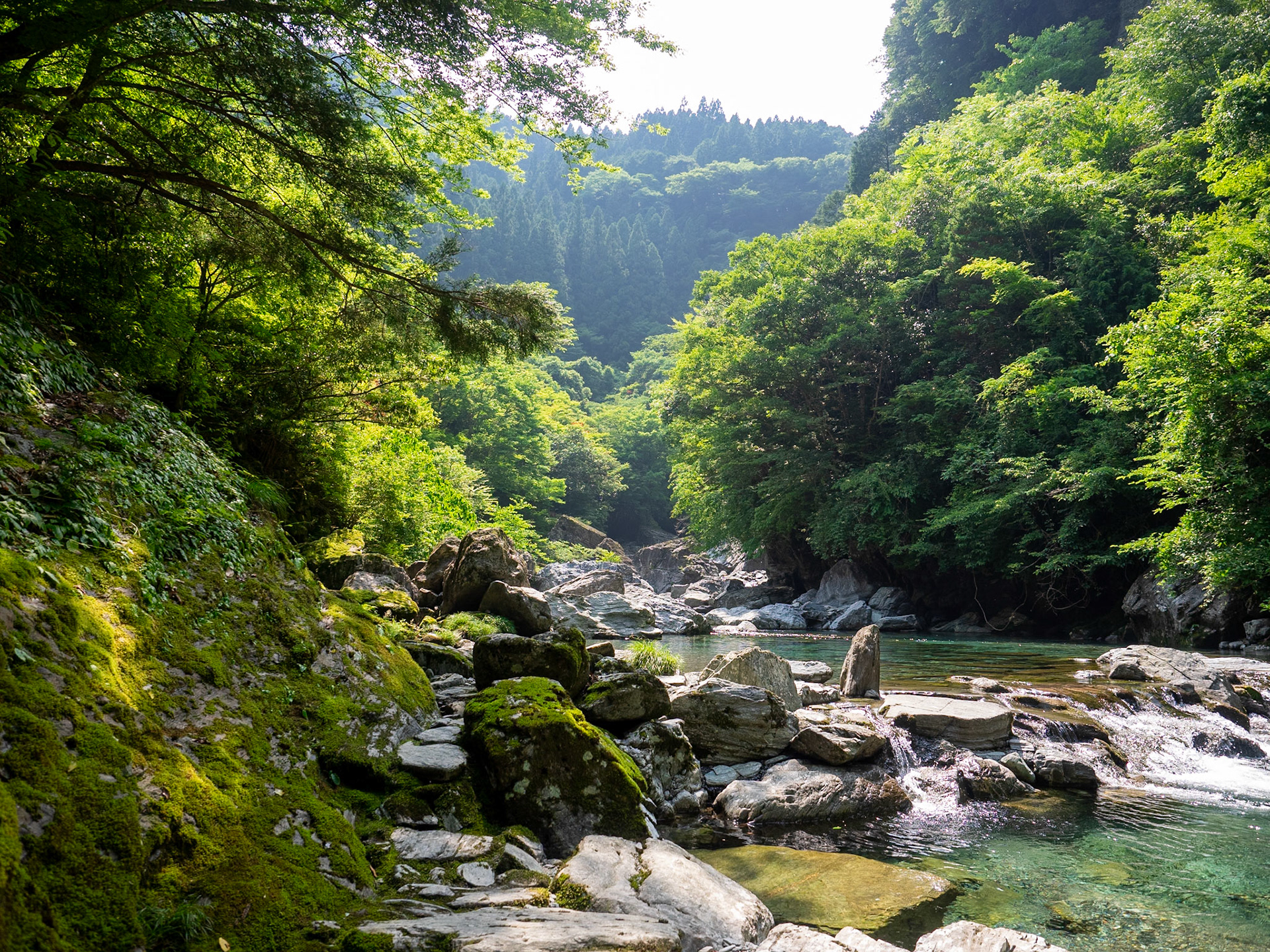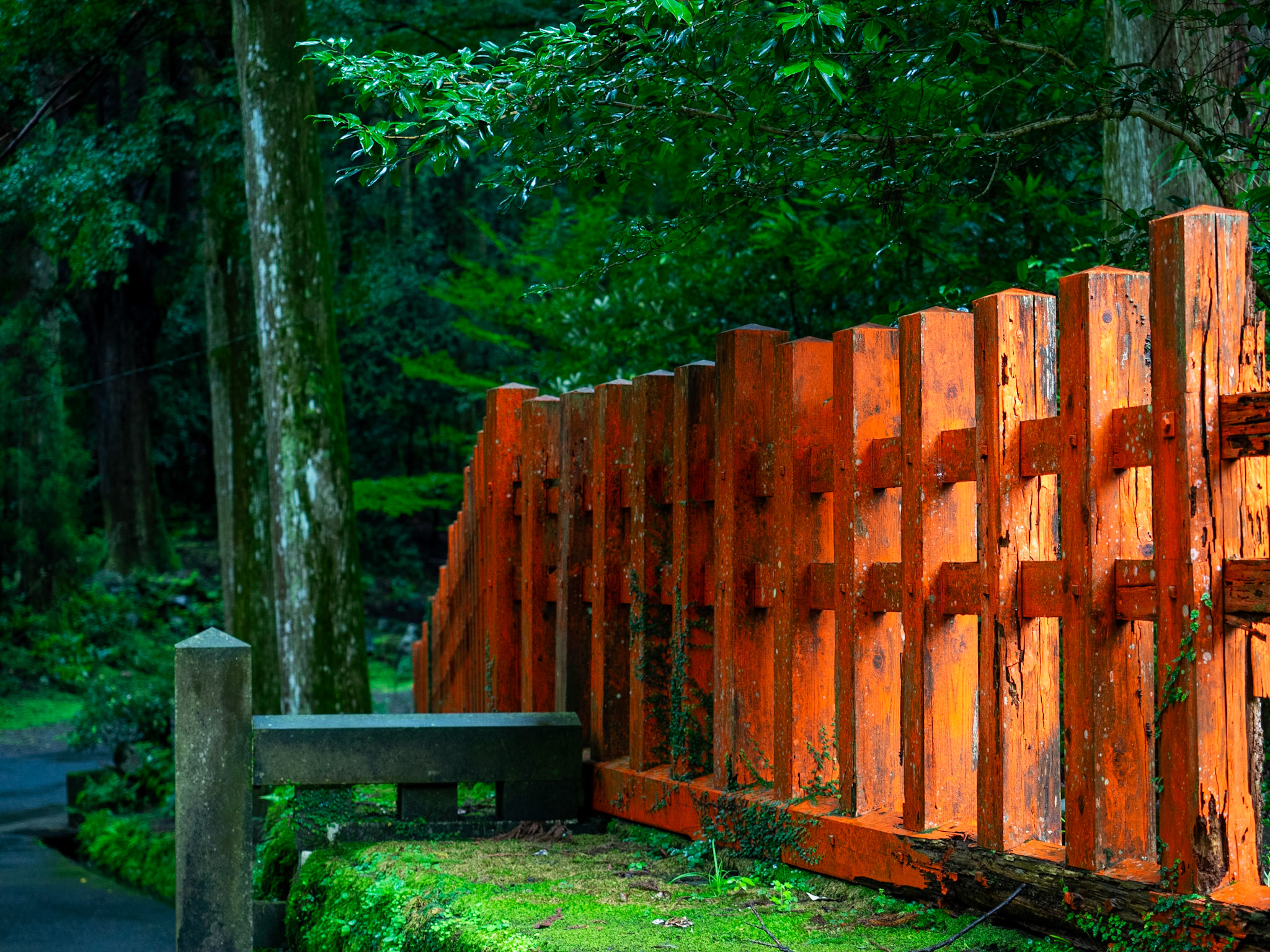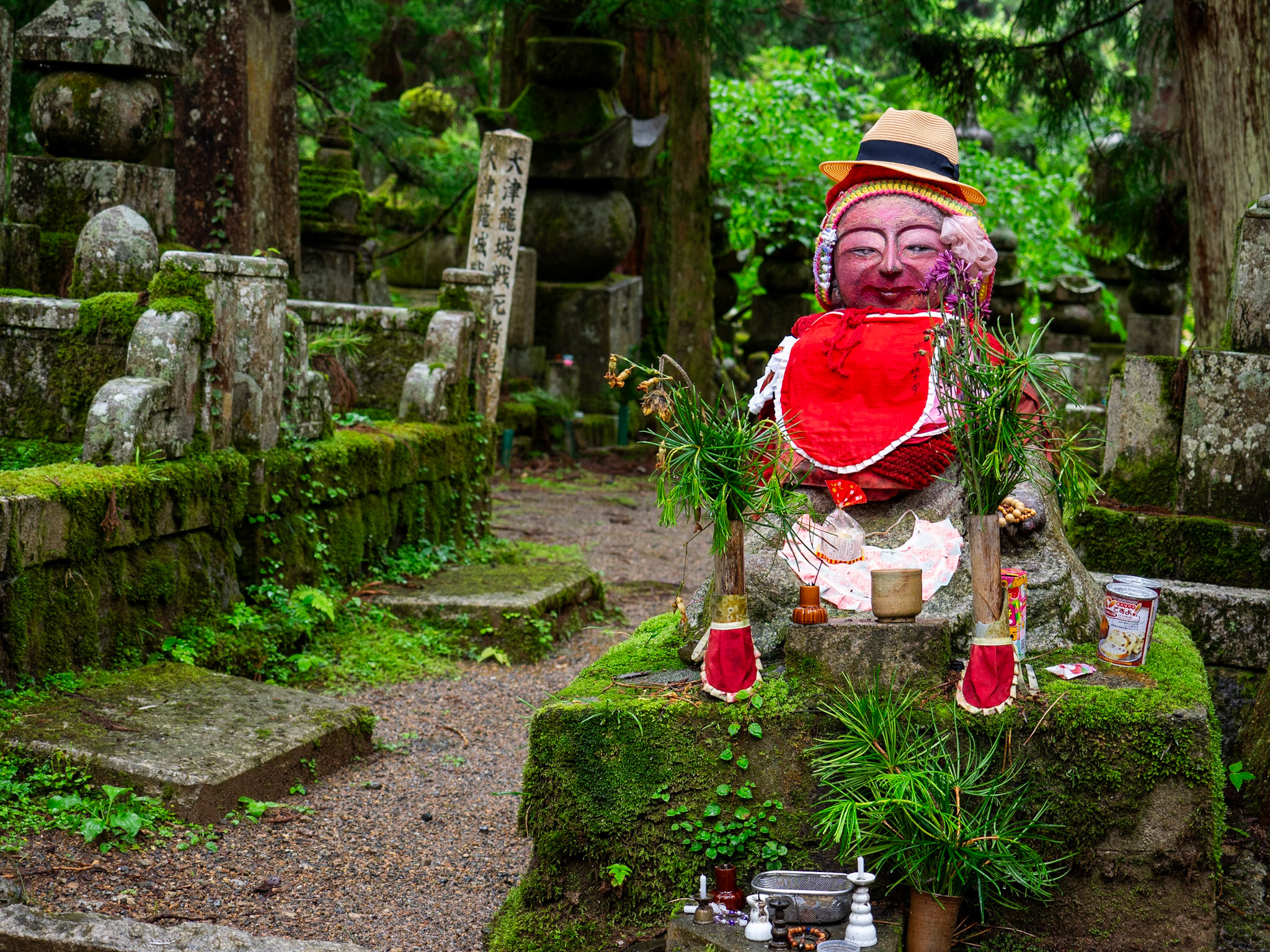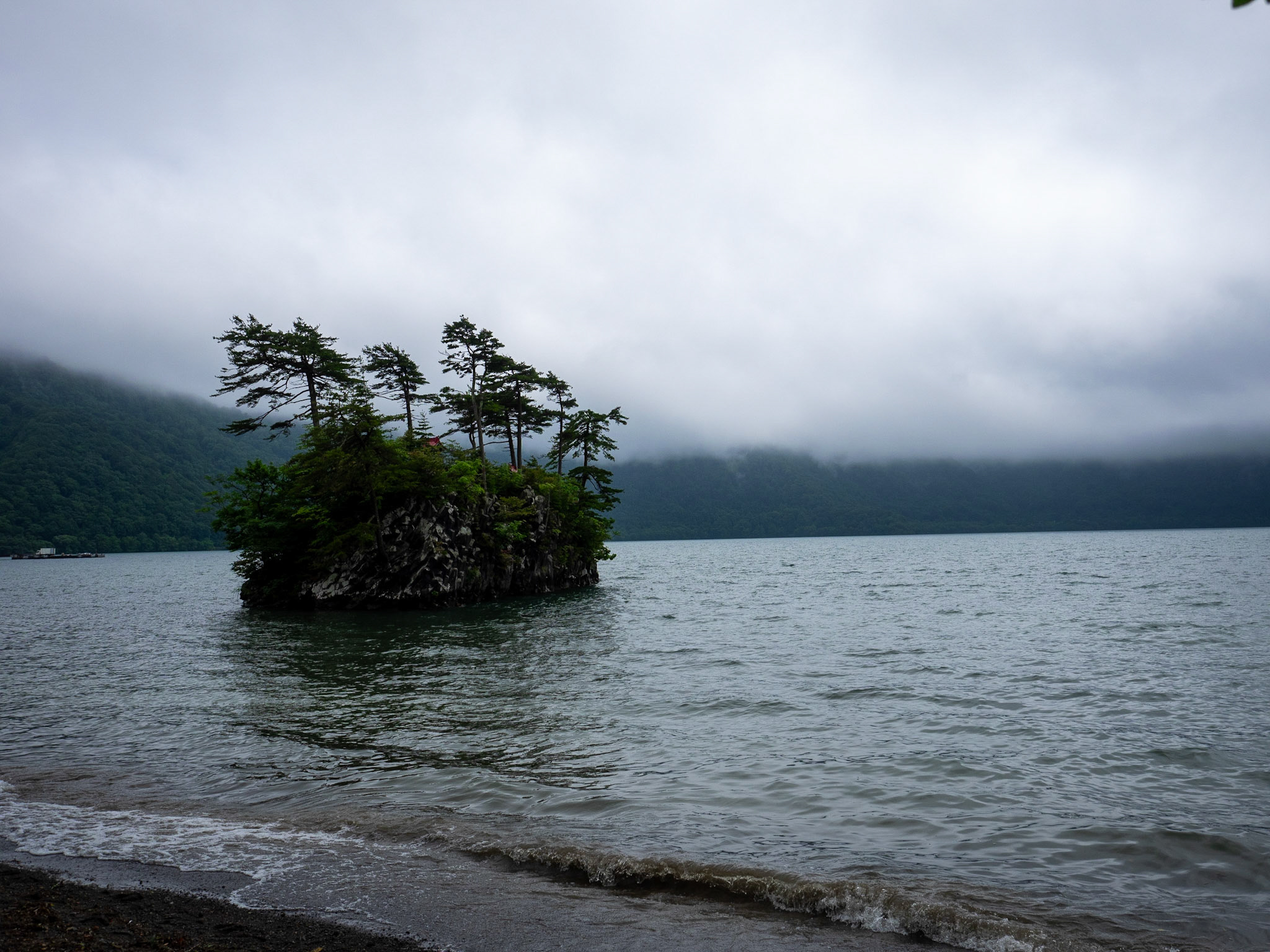Shōryūji, Temple 36, Kochi
Shikoku is the smallest of Japan's four main islands, and the least touristed. In some ways, taken as a whole, it's Japan in miniature, and absolutely worth your time.
Starting with some general observations.
Getting there and around.
Shikoku is easy to get to by train, via Wakayama, and the Marine Liner drops you easily in Takamatsu on the north east coast. After this though, the trains, and buses, are quite limited with the majority of Shikoku's best & most interesting sights in the countryside or just outside the major cities. So car hire is the way to go. Do note though that some of Shikoku's roads are the narrowest & trickiest I've come across in Japan. The Iya Valley, the interior road along the Shimanto River between Shimanto & Yusuhara, and the roads to Nakatsu & Shisui Gorges outside Kochi come to mind. Don't let that stop you, or worry about some of the exaggerated fears online - it just means that distances in Shikoku can take significantly longer once you're off the expressways. The main cities, Takamatsu, Kochi, and Matsuyama, are easy to get around by local train, or, in the case of the latter two, by tram.
Food
Like most of Japan, Shikoku has it's own regional takes on food. But some of these really shine. Be it udon noodles in Takamatsu, fresh seafood anywhere along the coast, the use of various citrus fruits, craft miso & soy as key flavourings, this is something to embrace. And as a bonus people across Shikoku, whether on the street, or in izakayas or markets, are genuinely welcoming of tourists & outsiders, unlike some of the stand-offishness you might encounter in Central Honshu.
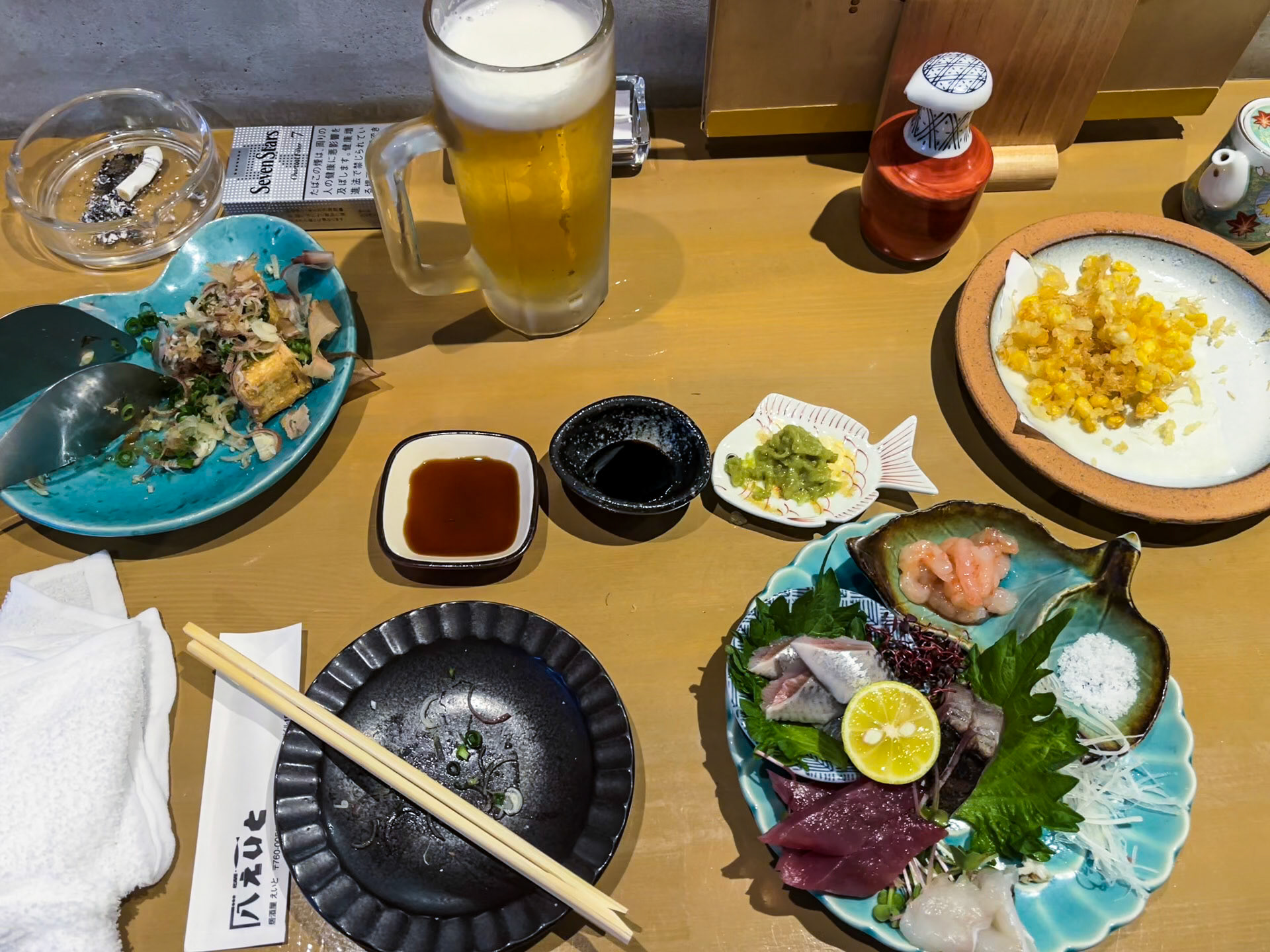
Izakaya, Takamatsu
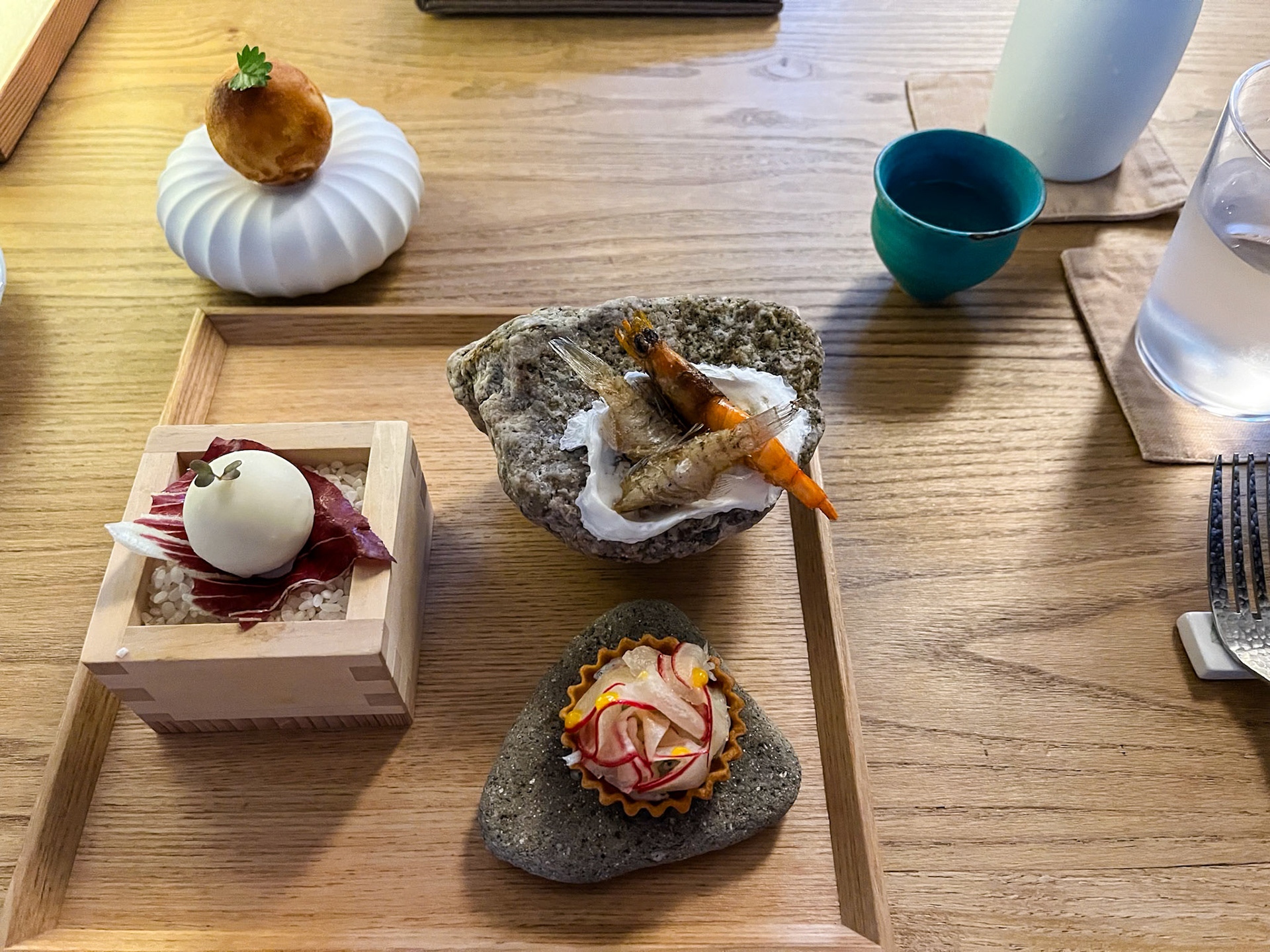
Kaiseki, Setoda
Sights
Rather than try and provide some detailed, geographically based itinerary & comments, I'll suggest some Shikoku highlights by themes. Bearing in mind that any journey in Shikoku is likely to have great scenery along the way, and any number of extra stops, depending on your interests.
Temples & Shrines
Given Shikoku is famous for the 88 Temples Henro pilgrimage, this is a good place to start. One very pleasant surprise here was that many of the Buddhist temples we visited had more in common with Shinto shrines in their close relationship with nature compared to Buddhist temples elsewhere in Japan. So personal recommendations are weighted heavily in favour of the atmosphere & architecture of a place, rather than their importance in religious practice.
One other note about the Henro pilgrimage is that a lot of stuff online is heavily focused towards Westerners, and the traditional walking routes and practices, either as a whole or, more commonly, in parts. On the ground, and in more detailed Japanese journalism, there's real concern the Henro traditions are dying out. This is due to a combination of rising living costs & falling pensions among the most common pilgrimage participants, plus the aging population, and the also the sheer time it takes to walk the 2 month circuit by foot. We certainly encountered only a handful of pure walkers, and only a few tour buses. The vast majority of pilgrims arrived by car, donned their Henro attire, and chose a selected distance to walk, ranging from using the closest car park, to walking up, and down, the actual hill or mountain the temple is perched on. And many Henro temples are perched.
Bearing in mind we haven't visited all 88 Henro temples, much less all the various other temples & Shinto shrines in Shikoku, here are some subjective recommendations.
Yakuriji, Temple 85, near Takamatsu
Reached by using a cute funicular railway, then along a winding path through forested slopes, with atmospheric side shrines
Hashikura Temple, central Shikoku, south of Takamatsu
Not one of the 88 Henro temples, this is reached via a long cable car, or as the Japanese term it, a ropeway. Even after the top ropeway station there are several long steep flights of stairs to the upper level of temple buildings. But well worth it for the setting.
Chikurinji, Temple 31, Kochi
One of the largest temple complexes this has some lovely gardens, quirky statuary, and views.
Zenjibuji, Temple 32, Kochi
A much smaller complex to the south east of Kochi city, this has sea views & a slightly off beat feel.
Shōryūji, Temple 36, Kochi
To the west of Kochi city, Shoryuji is on a delightful small forested hillside. A much quieter temple but highly recommended
Daihōji Temple, Temple 44, towards Matsuyama
An inland temple in the mountains south of Matsuyama, it is nestled in towering cedar trees
Iwamoto Temple 37, on the south coast
Along the south coast of Shikoku, this temple lacks the forest settings, or even a mountain to climb. But it's worth noting for it's mass of donated paintings, covering the ceiling and internal walls. It's also one of the few temples we saw with a fully functioning, modern, Henro stop, with accomodation, showers & meditation rooms.
Mishima Shrine, Yusuhara
An atmospheric, old school, Shinto Shrine on the outskirts of Yusuhara. There's even a sacred sumo ring in the grounds.
Ōkubo Temple, Temple 88
The last temple on the Henro circuit. An interesting mix of modern & traditional, plus some very relieved pilgrims.
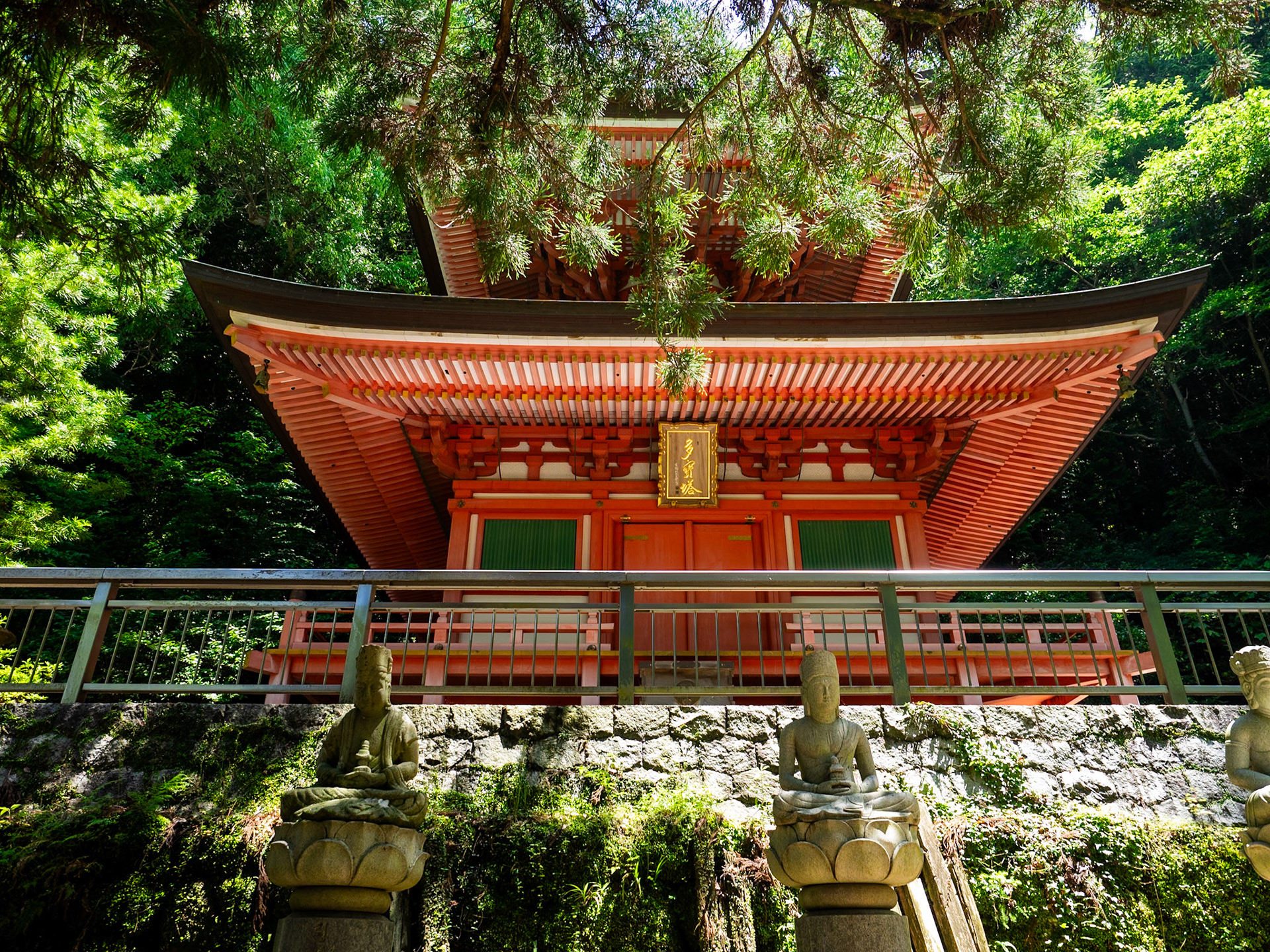
Yakuriji, Temple 85

Ōkubo Temple, Temple 88
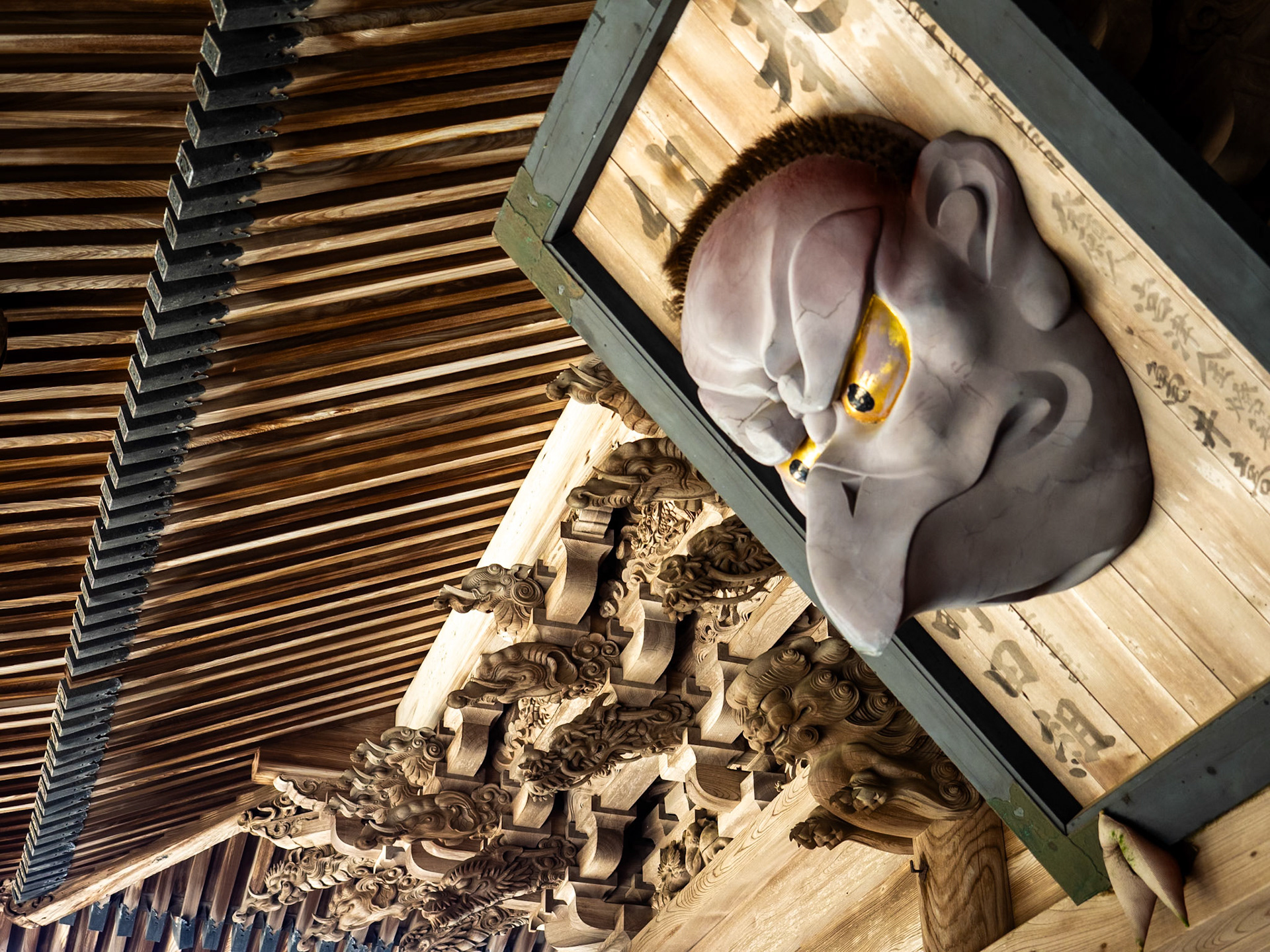
Hashikura Temple, Shikoku
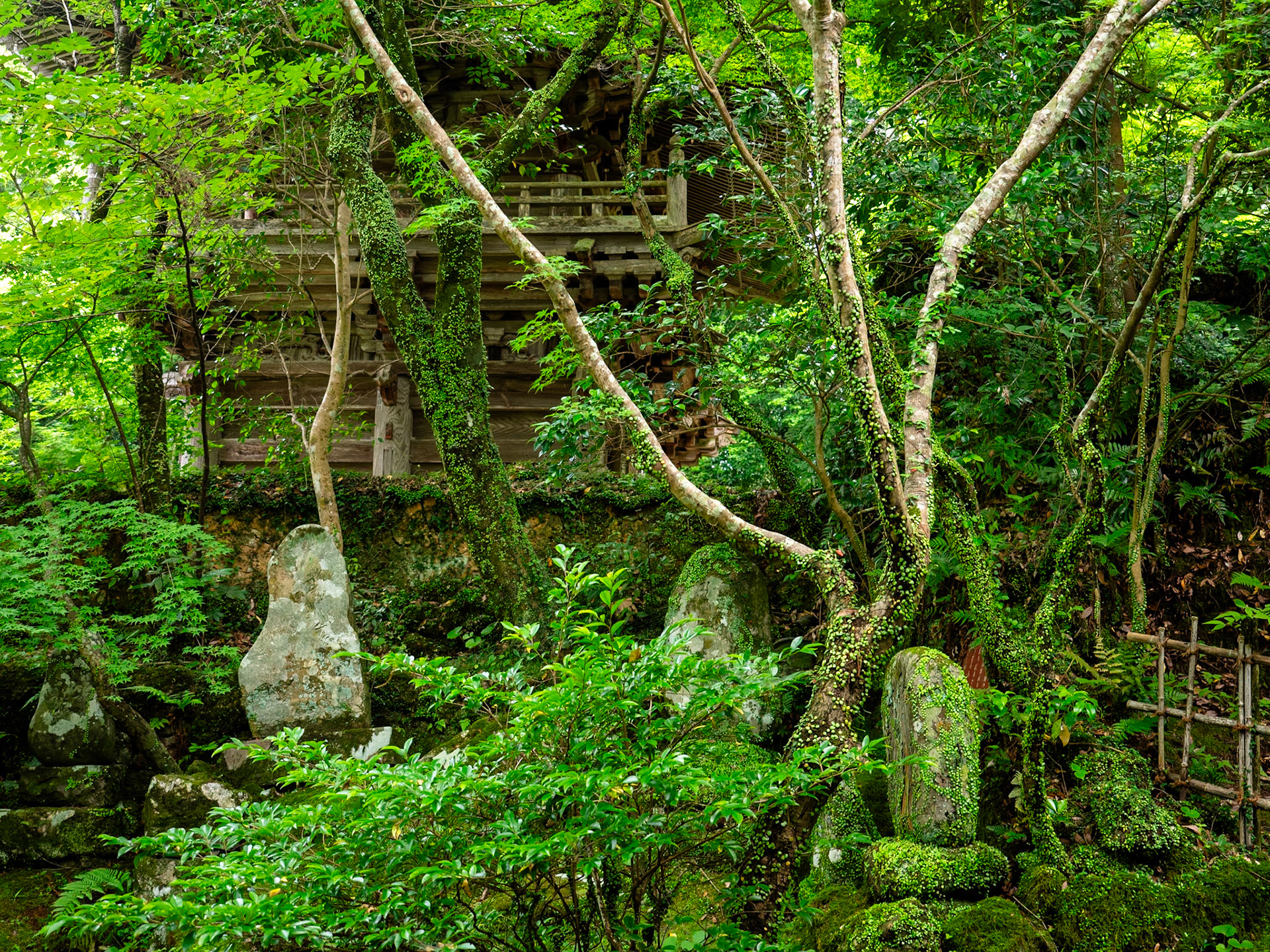
Chikurinji, Temple 31, Kochi
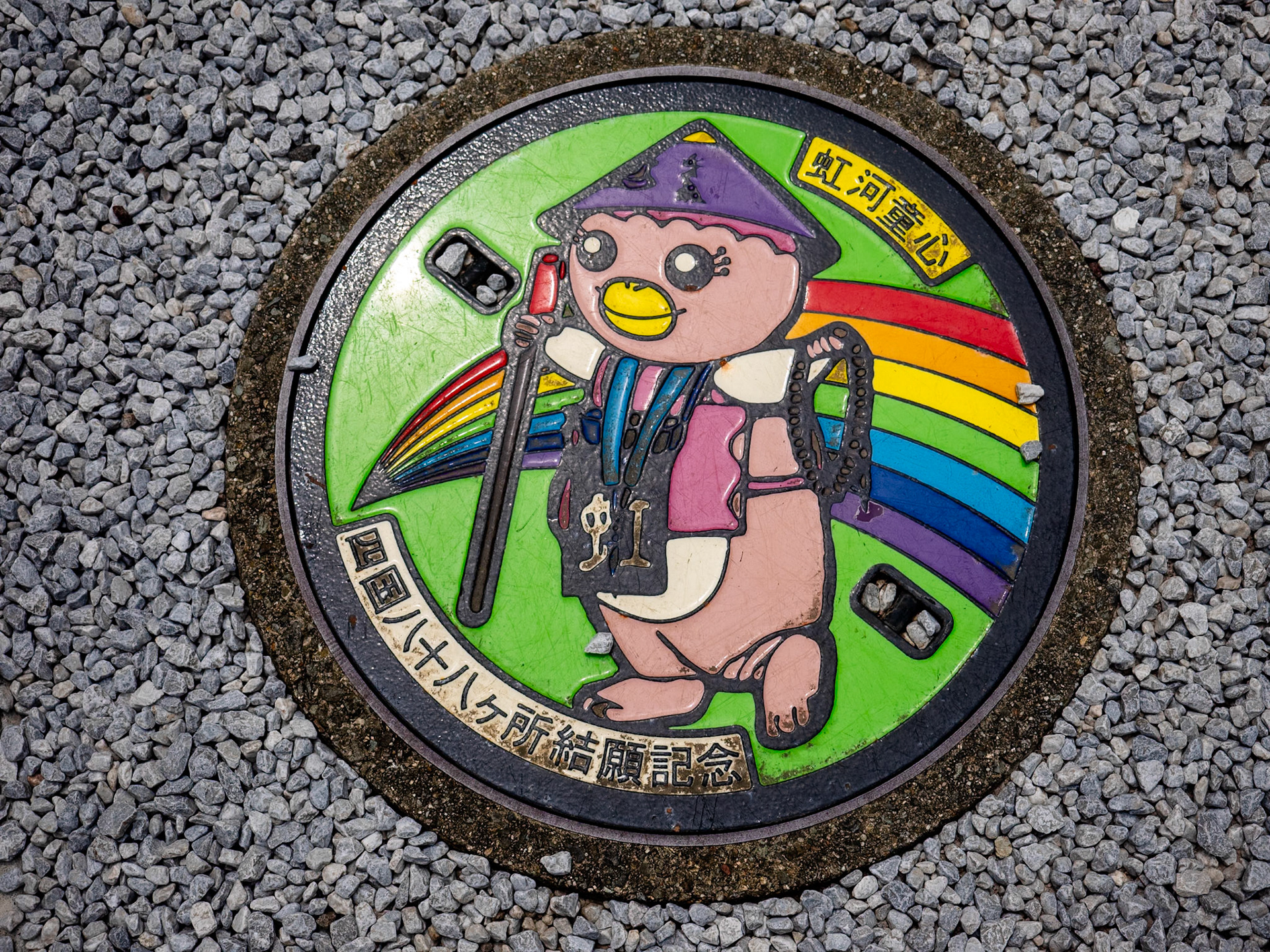
Shikoku
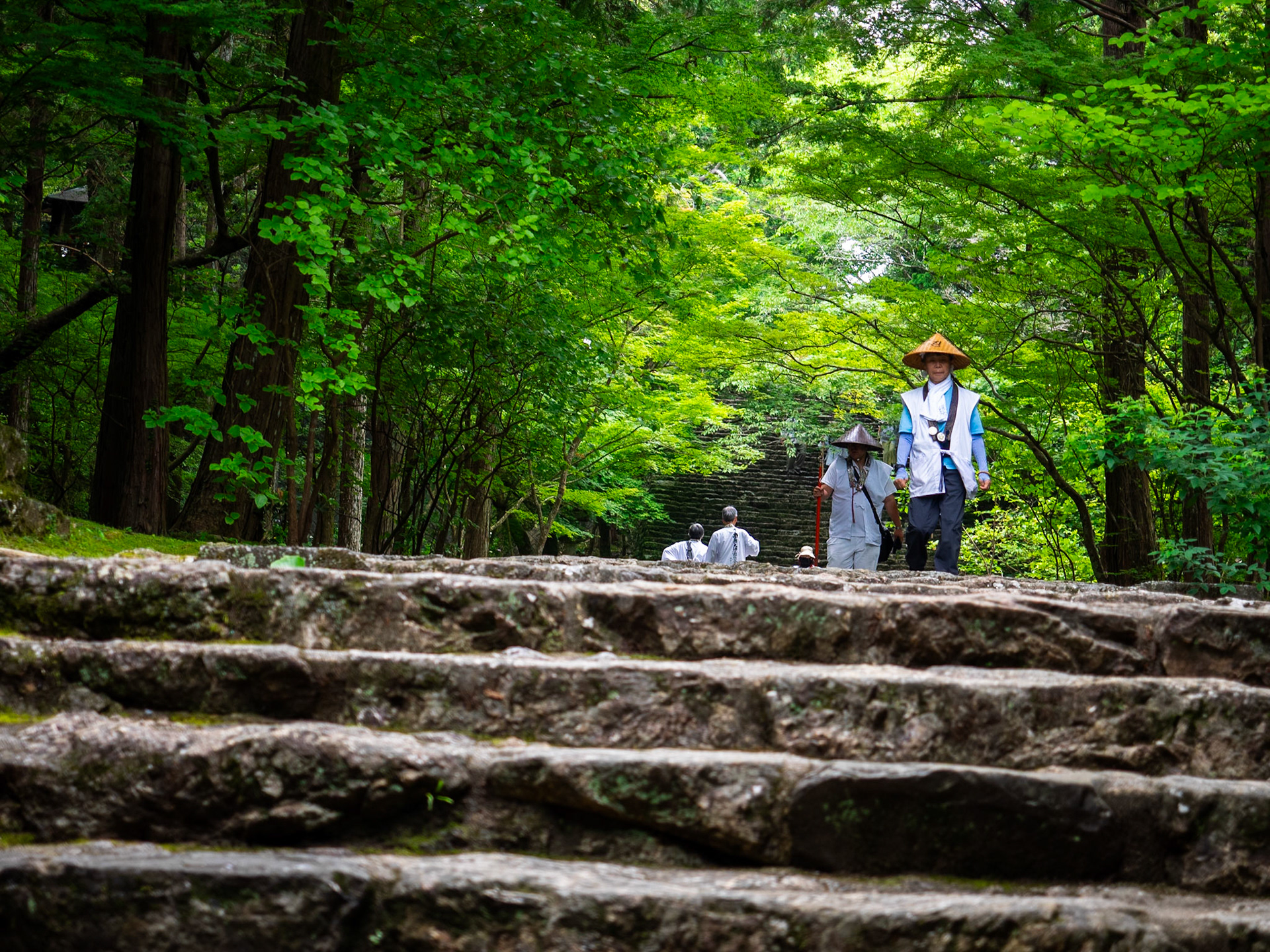
Chikurinji, Temple 31, Kochi
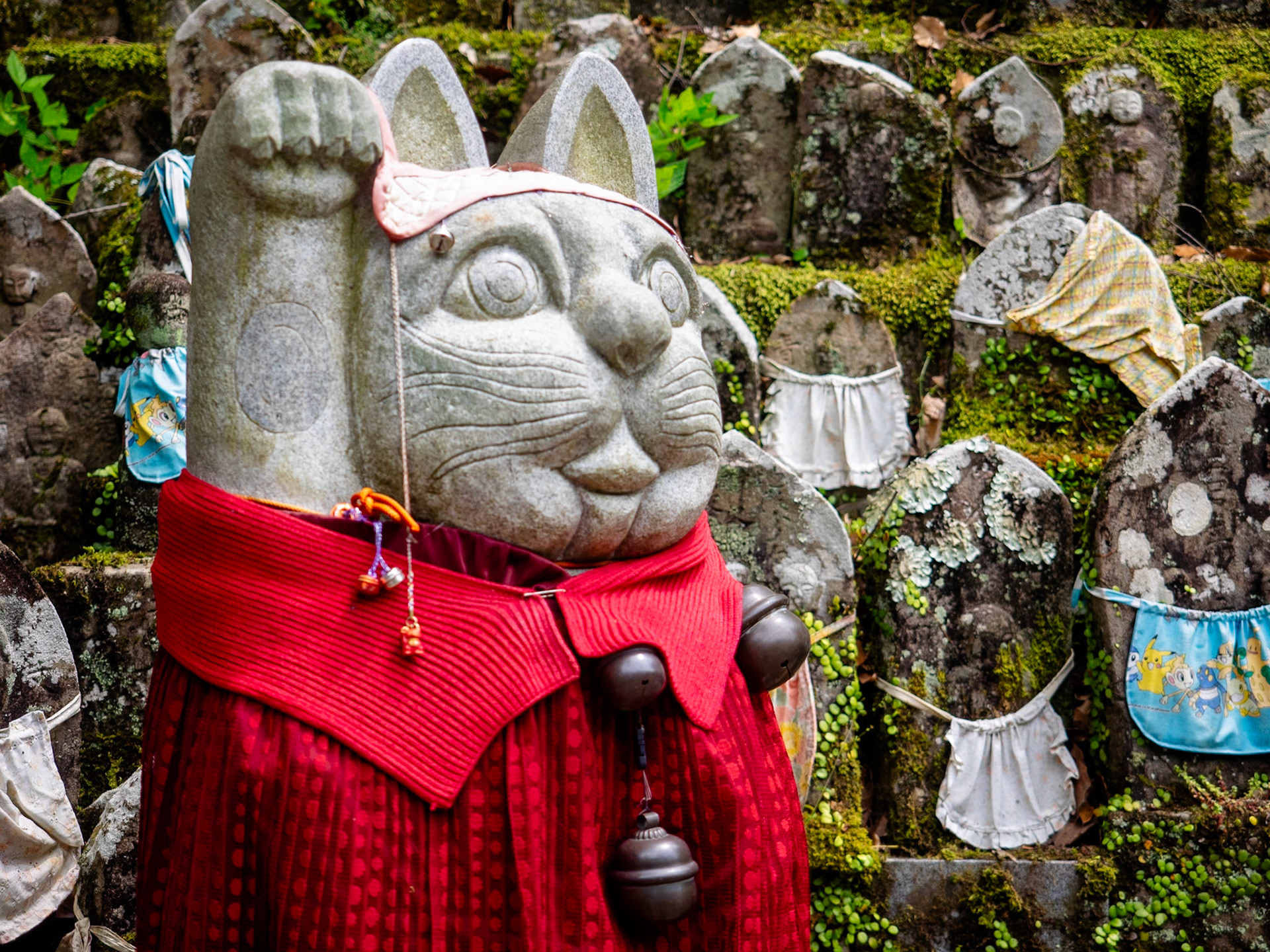
Chikurinji, Temple 31, Kochi
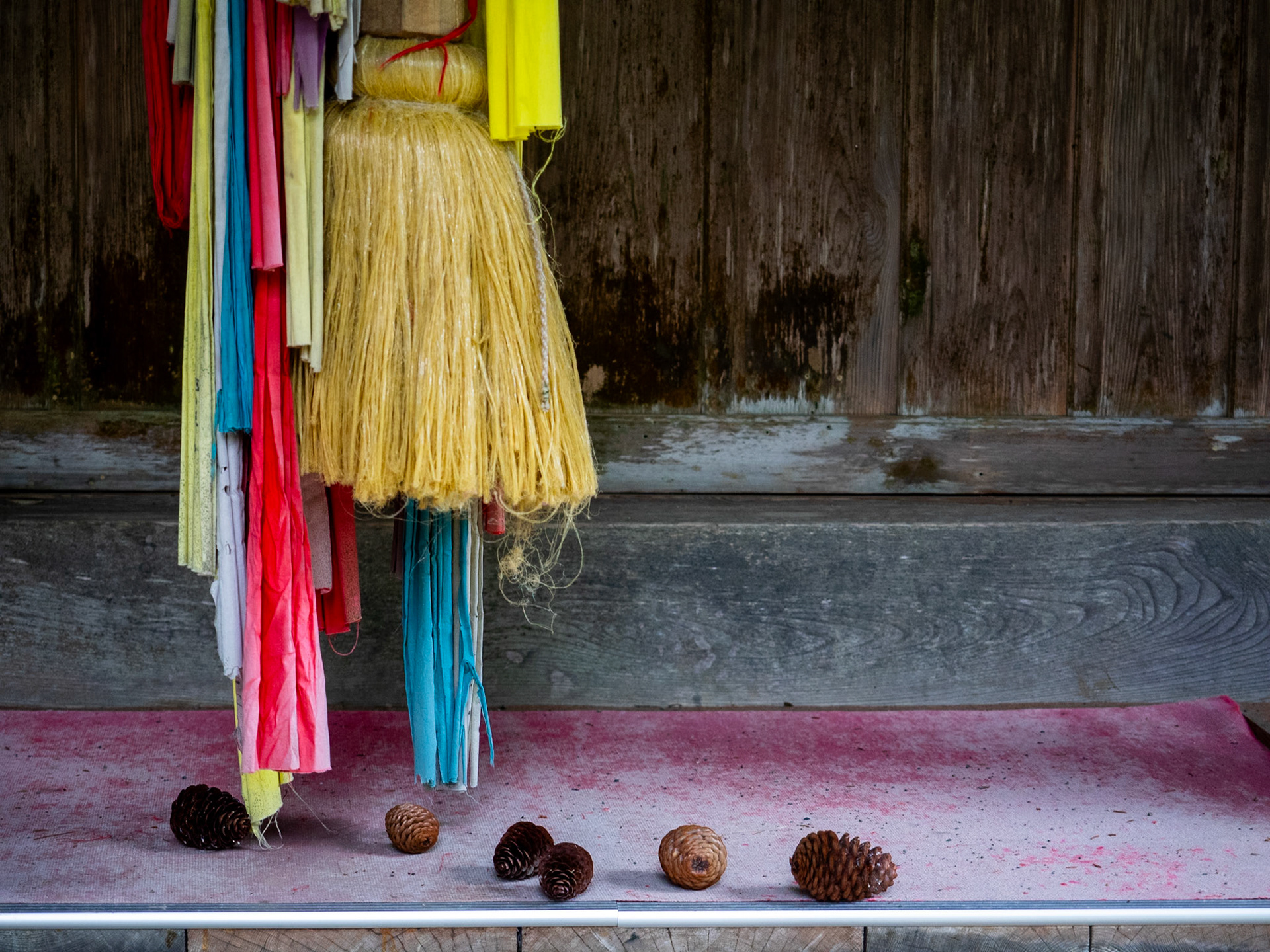
Yusuhara
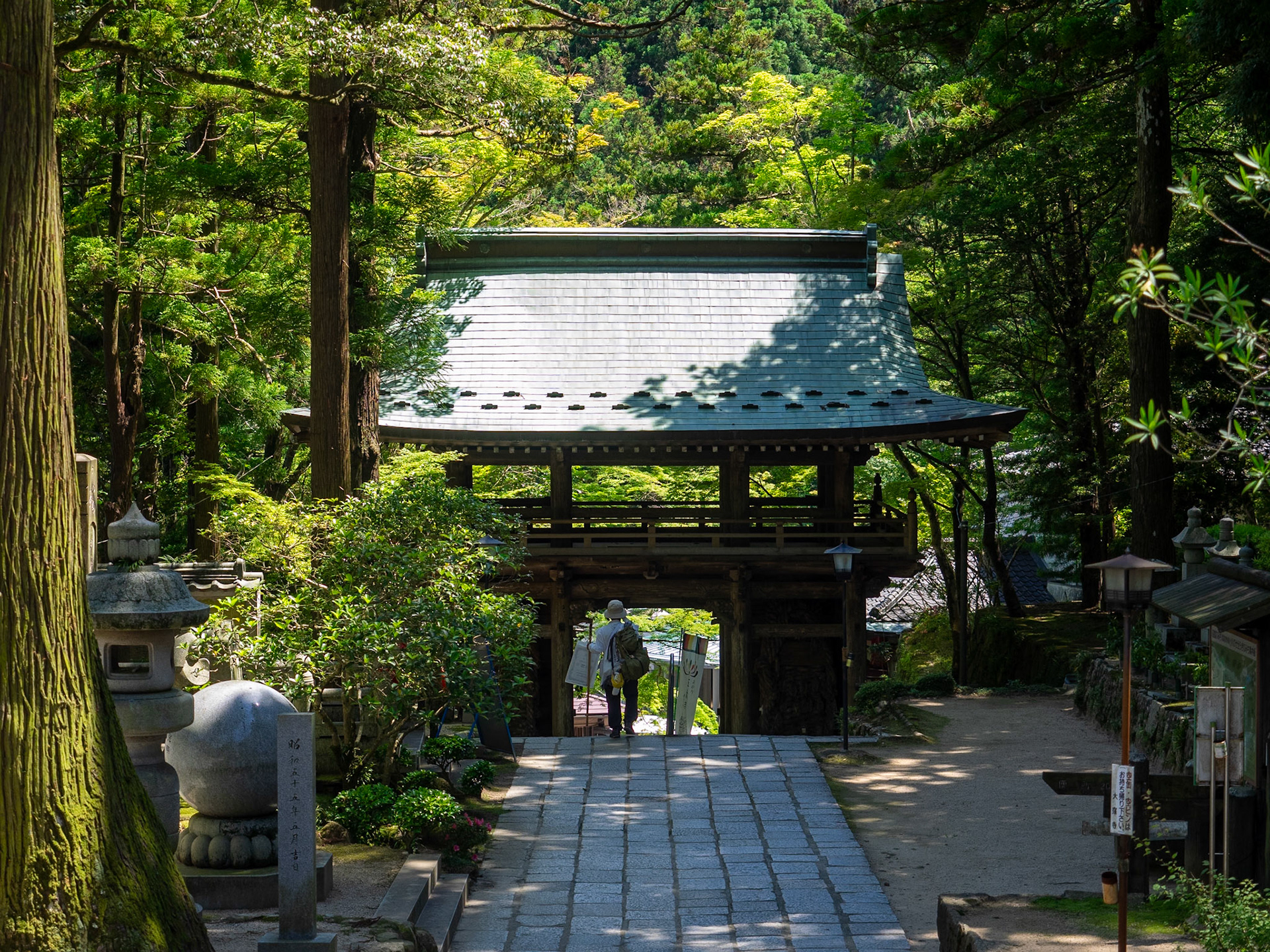
Ōkubo Temple, Temple 88
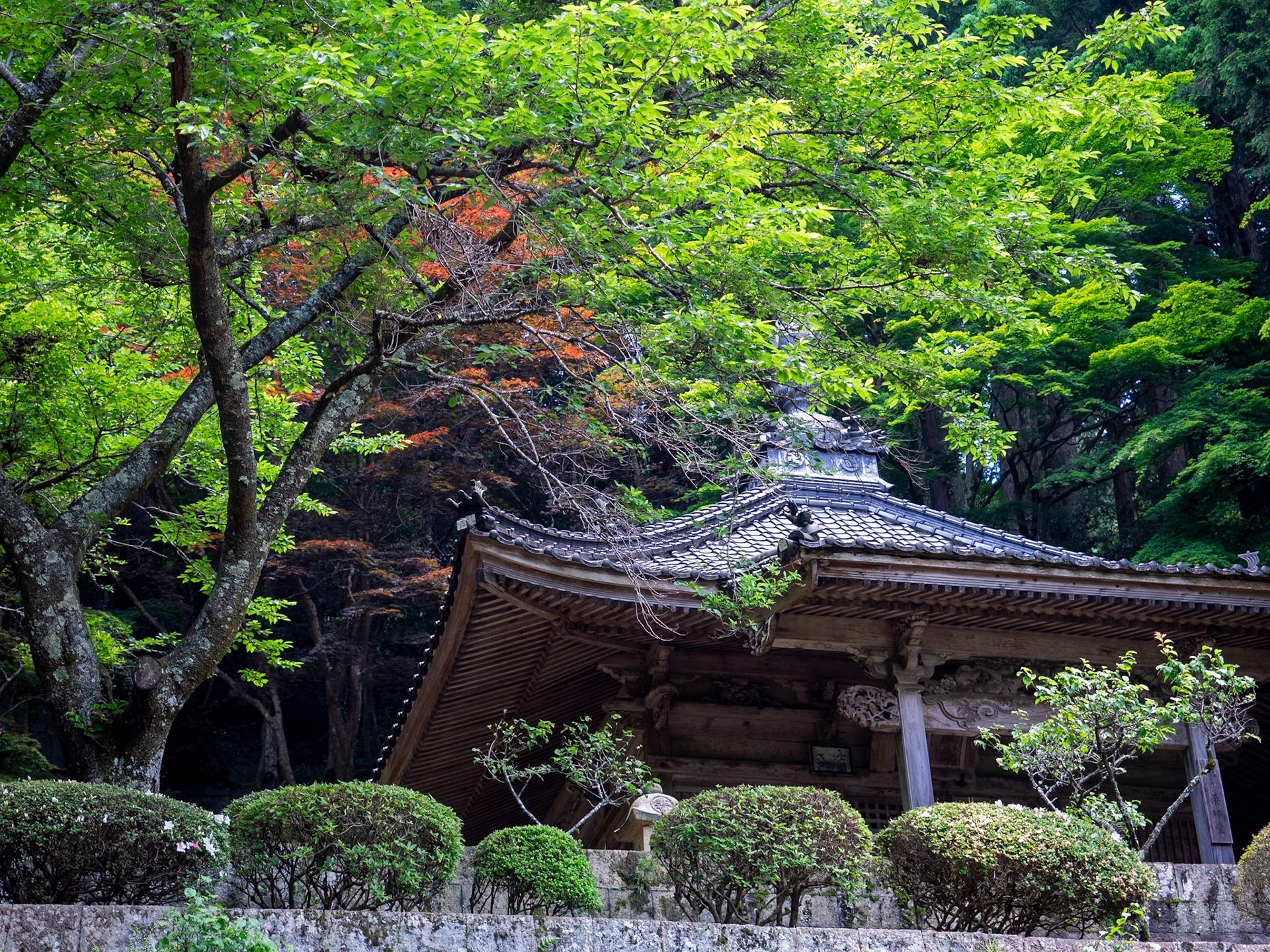
Hashikura Temple, Shikoku
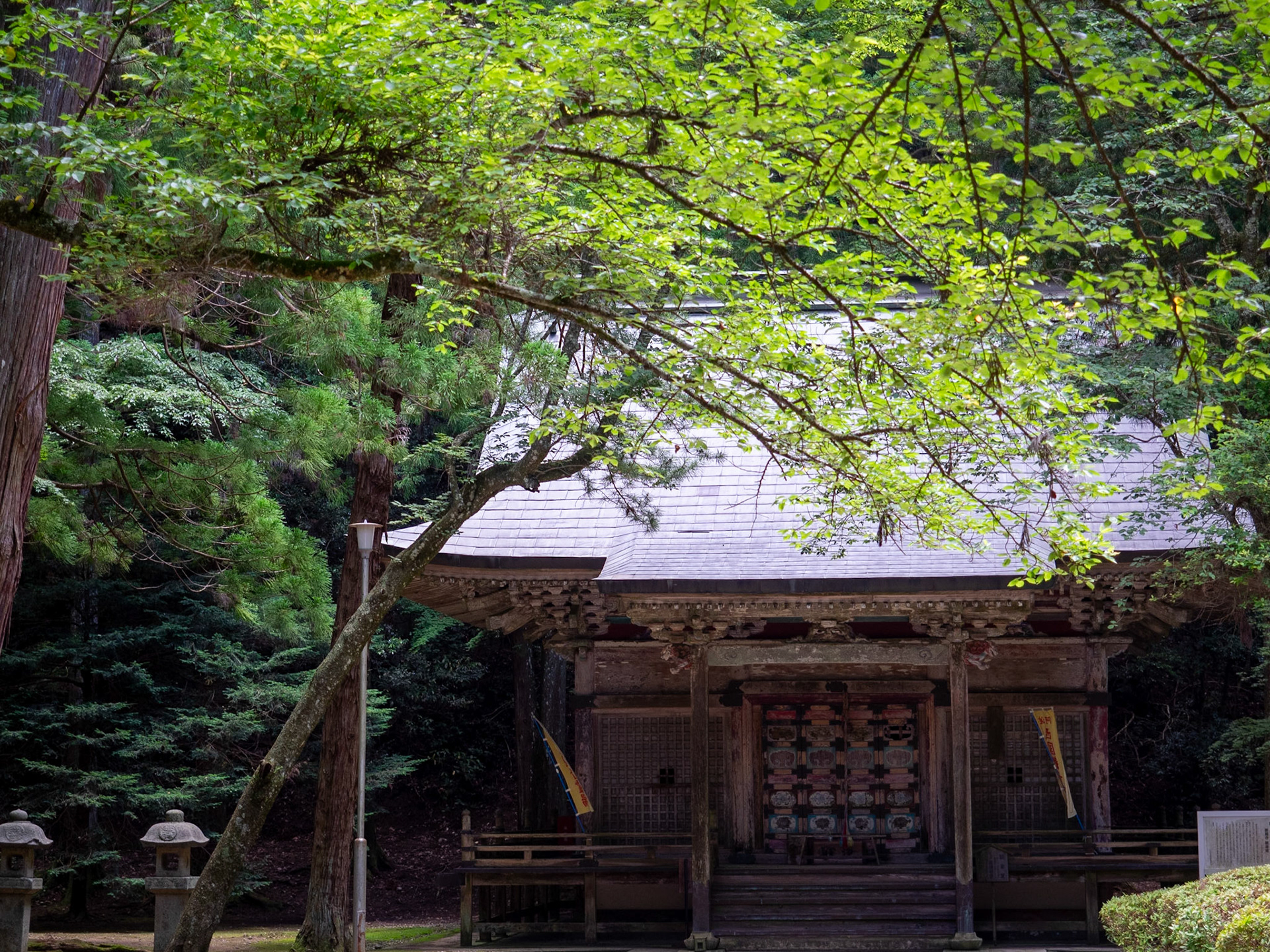
Hashikura Temple, Shikoku
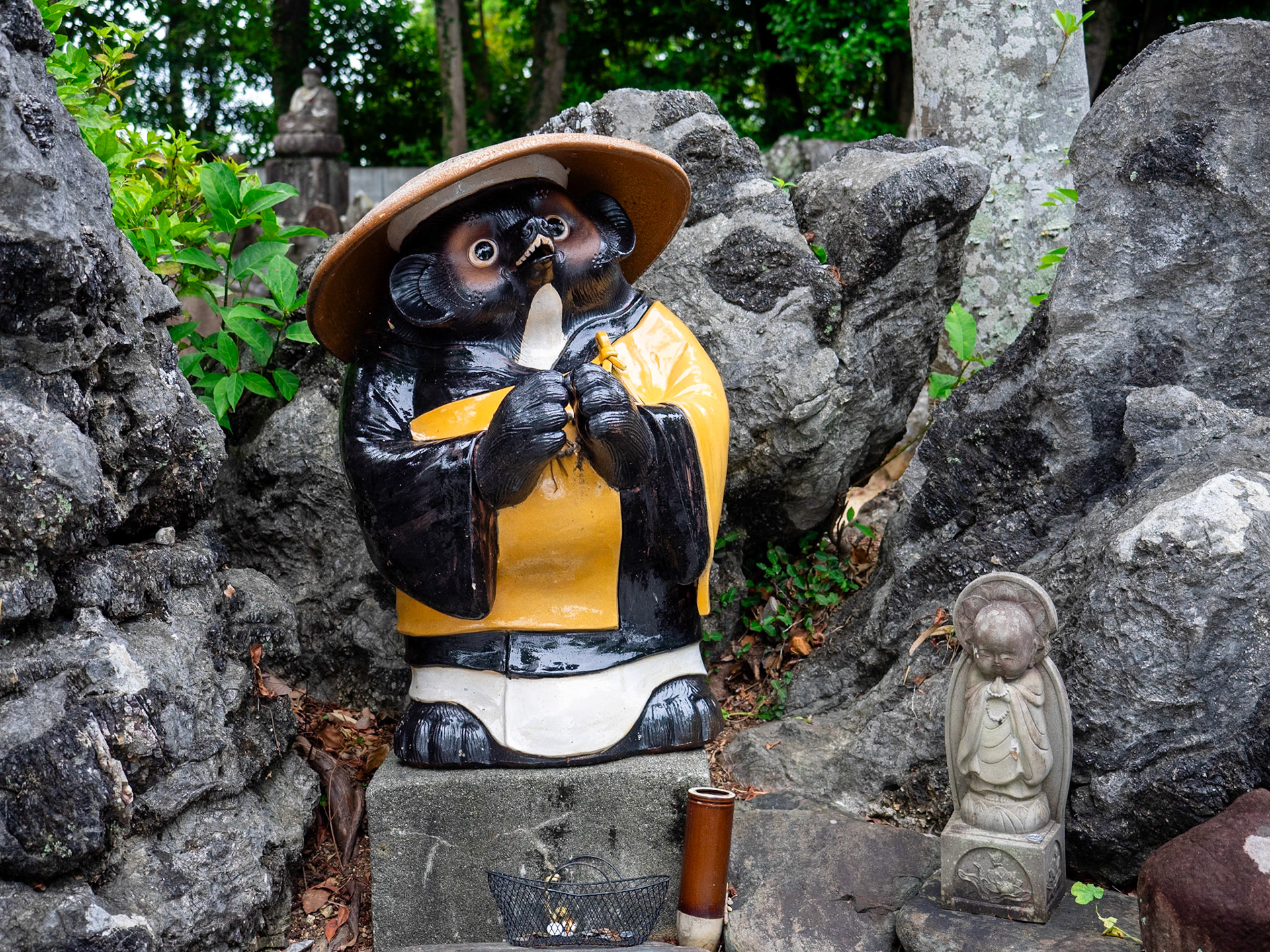
Zenjibuji, Temple 32
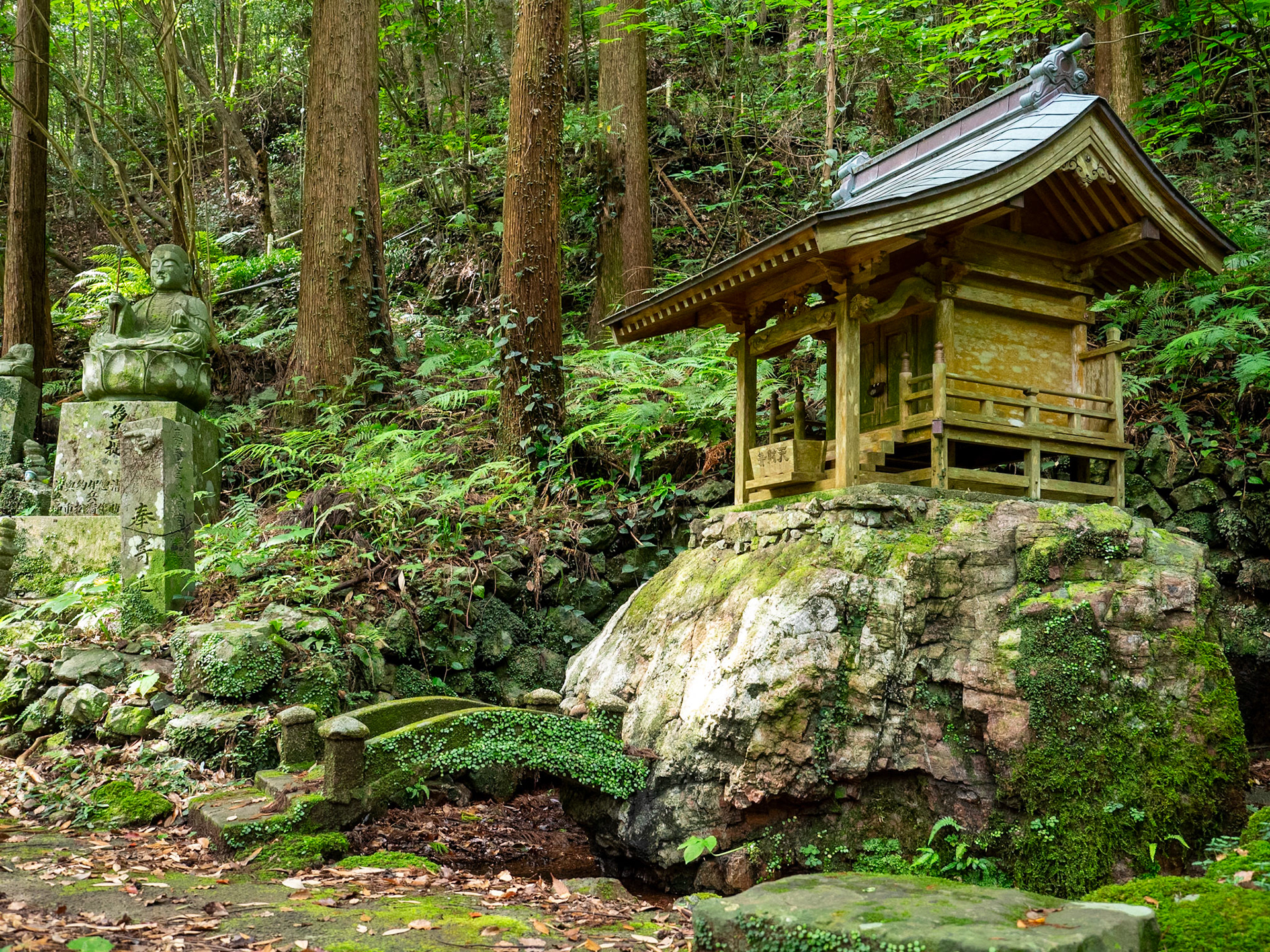
Shōryūji, Temple 36, Kochi
Gardens
Shikoku boasts two of the best gardens I've seen in Japan.
Ritsurin, Takamatsu
This is a 300 year old strolling garden. Rated as one of the Big Four japanese gardens, it was started in the 1400's and finished in the mid 1700's. It's superbly designed & planted with new points of interest every few steps. And although Shikoku has a more temperate climate, Ritsurin is noted for it's pine trees. Particularly the older southern portion, with it's must see side paths & detours to viewing spots has enough for hours of wandering & contemplation. The newer redigned northern section, formerly used by the daimyos as a duck shooting lake, has also been sympathetically developed, albeit with a somewhat more modern garden aesthetic.
The Kochi Prefectural Makino Botanical Garden, Kochi
A very very extensive Botanic garden, right up there with the best I've visited worldwide. This is all about the plants, though the landscaping & even some of the contemporary architectural buildings are also strong points. Sprawling over a hillside it rewards meandering walks. An added bonus is that it is adjacent to one of the best landscaped Henro temples, Chikurinji, Temple no 31, with some of the temples former grounds making up part of the current gardens. Plus a slick modern restaurant for good lunch specials.
Also, Garyu Sanso
In the west of Shikoku, in the small town of Uzu, is Garyu Sanso. This is a small, almost domestic garden, as famed for it's traditional buildings, reconstructed & developed in about 1900, as it it for it's garden. But it's a lovely little example of buildings, garden & borrowed scenery, overlooking the river. all coming together in picture book classic Japanese style.
Bonsai
It's also worth mentioning that the north of Shikoku, near Takamatsu is renowned for it's bonsai nurseries, if that's your thing.
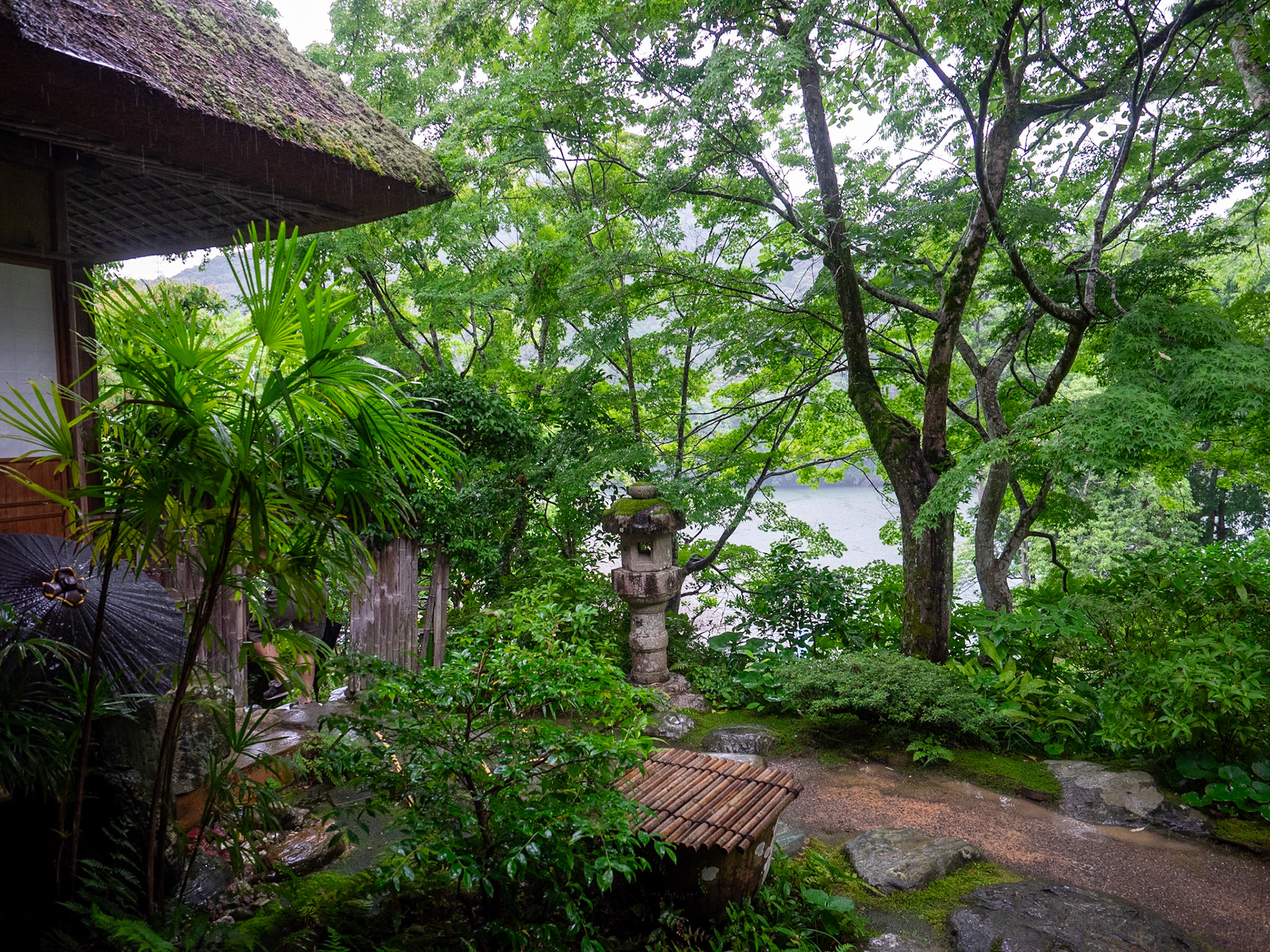
Garyu Sanso, Ozu
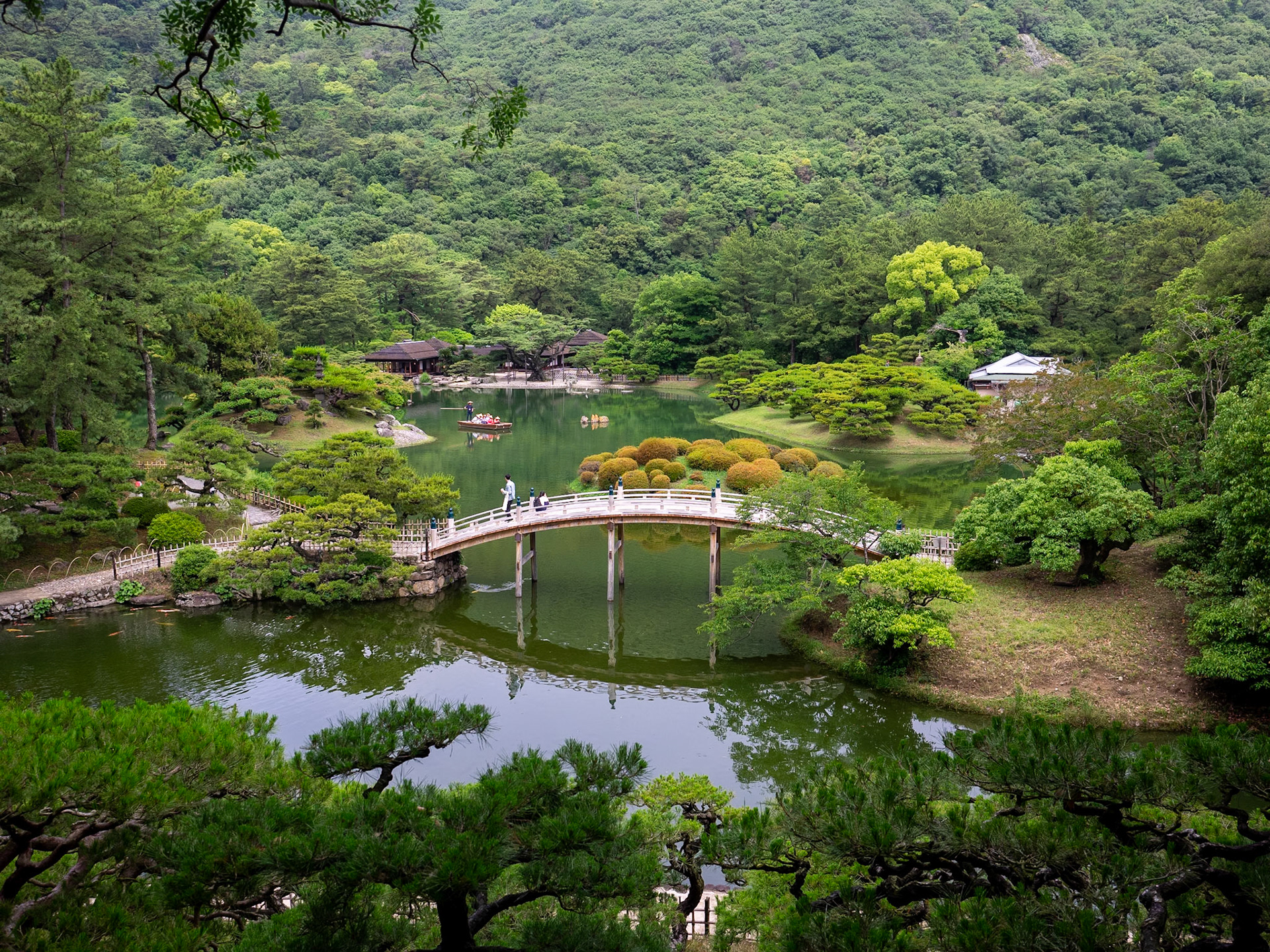
Ritsurin Garden

Ritsurin Garden
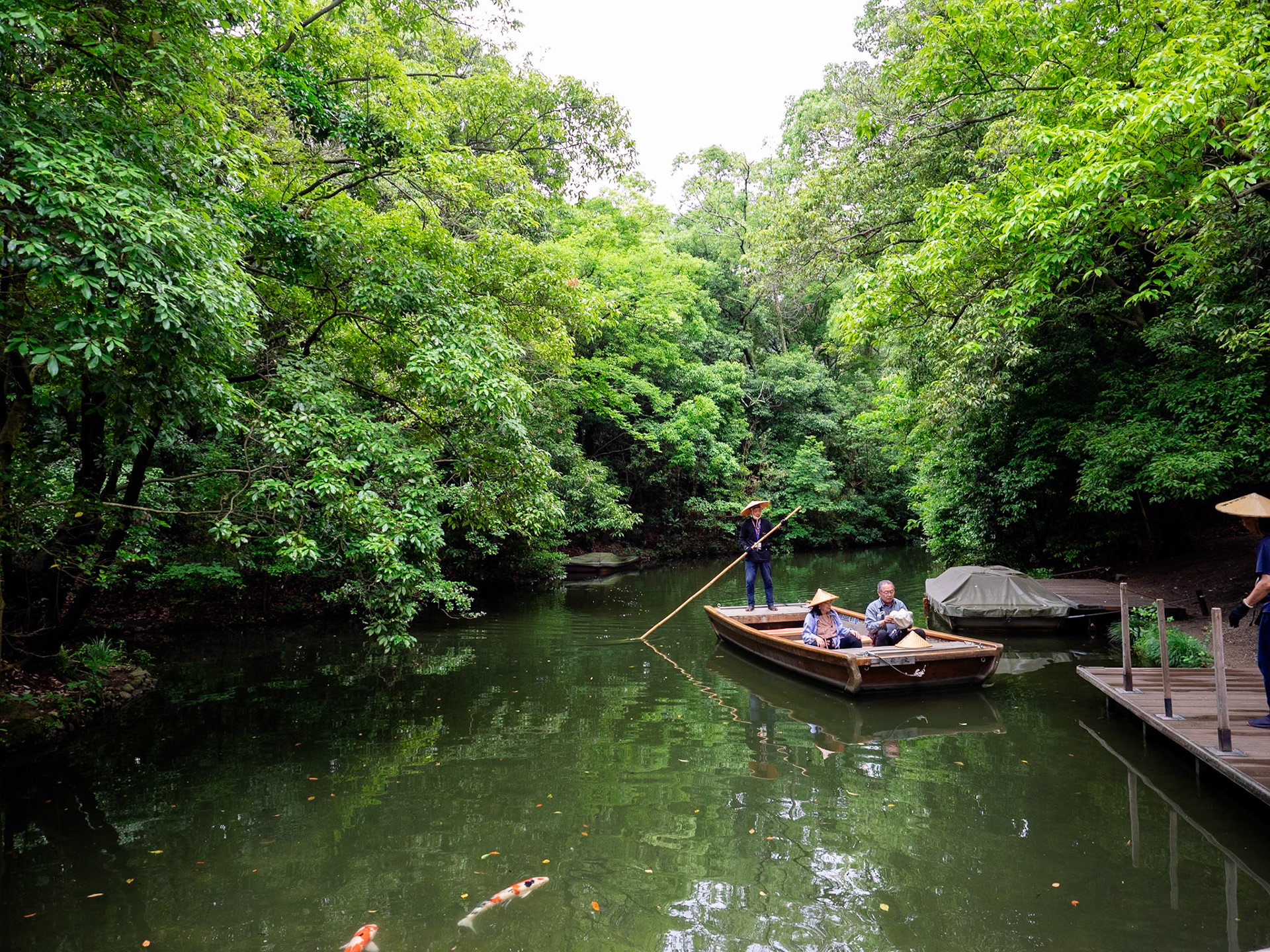
Ritsurin Garden

Ritsurin Garden
Castles
For a small, historically isolated island, Shikoku has more than it's share of castles. Taken as a group they are at least, if not more impressive than the castles on Honshu & Kyushu. Many are also original structures rather than post war reconstructions or concrete facsimiles.
The most expansive is Matsuyama Castle, perched on a hilltop overlooking the city, which still gives a good sense of it's extensive outer areas. Catch the cable car up, and walk down the very steep forested slope to Horinouchi or the City Art Gallery.
Kochi castle is another imposing, though smaller structure. The keep and tower are original here, as are Matsuyama's, two of only 12 such remaining in Japan.
As with most Japanese castles there are collections of artifacts inside, along with dress up opportunities, and, in Matsuyama's case, interactive strategy games - become your own warlord etc etc. Even if you don't partake it makes for good people watching.
Imabari-jō Castle is a concrete reconstruction, but quite interesting as an example of a seaside castle, with tidal moats. Note that there is a good display of some beautiful cultural artifacts in one of the wall towers here, a bit of a rarity for Shikoku, and an equally surprisingly extensive collection of armour in the main keep. This seaside location is something it shares with the mostly ruined Takamatsu castle.
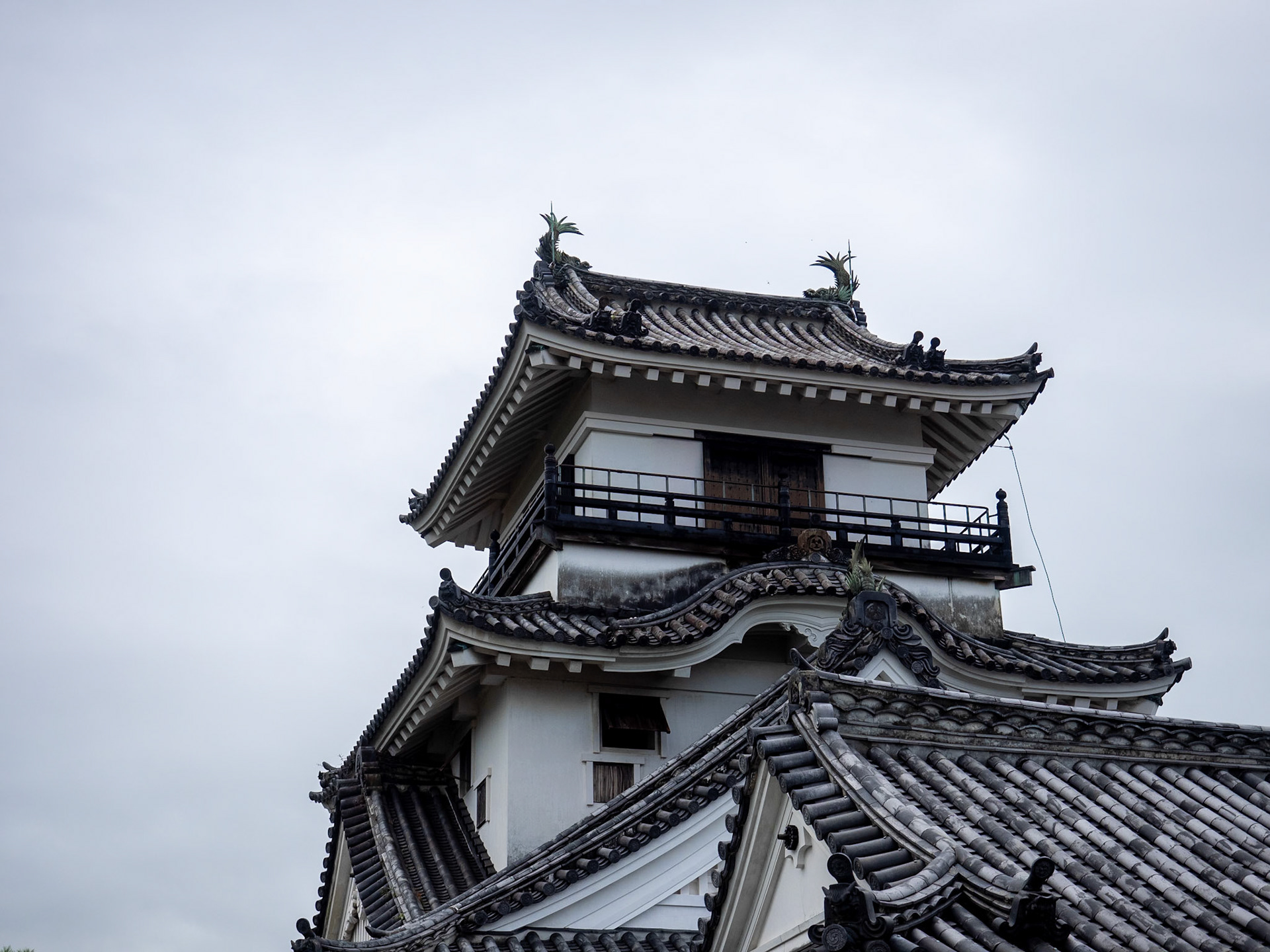
Kochi Castle
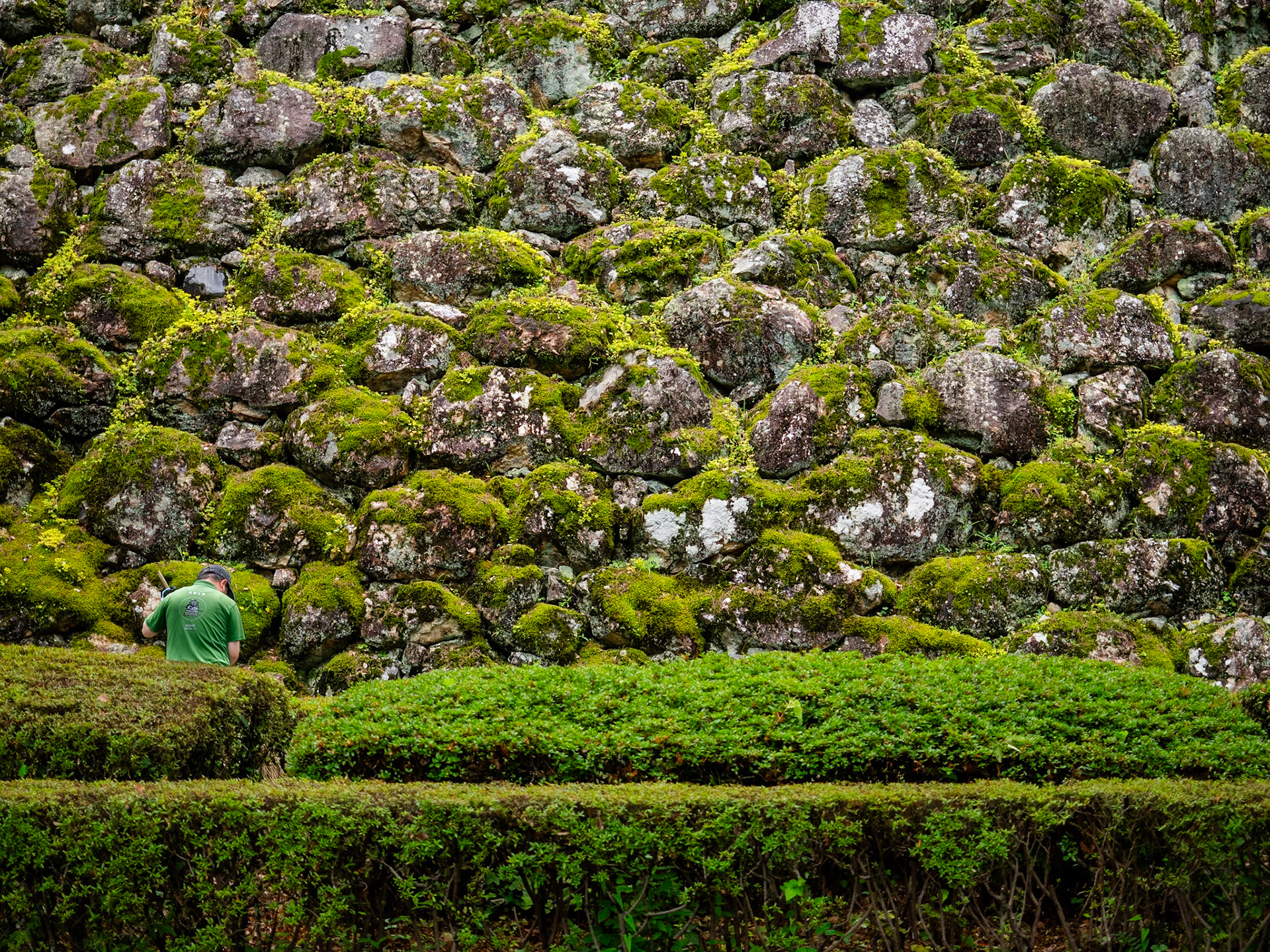
Kochi Castle Walls
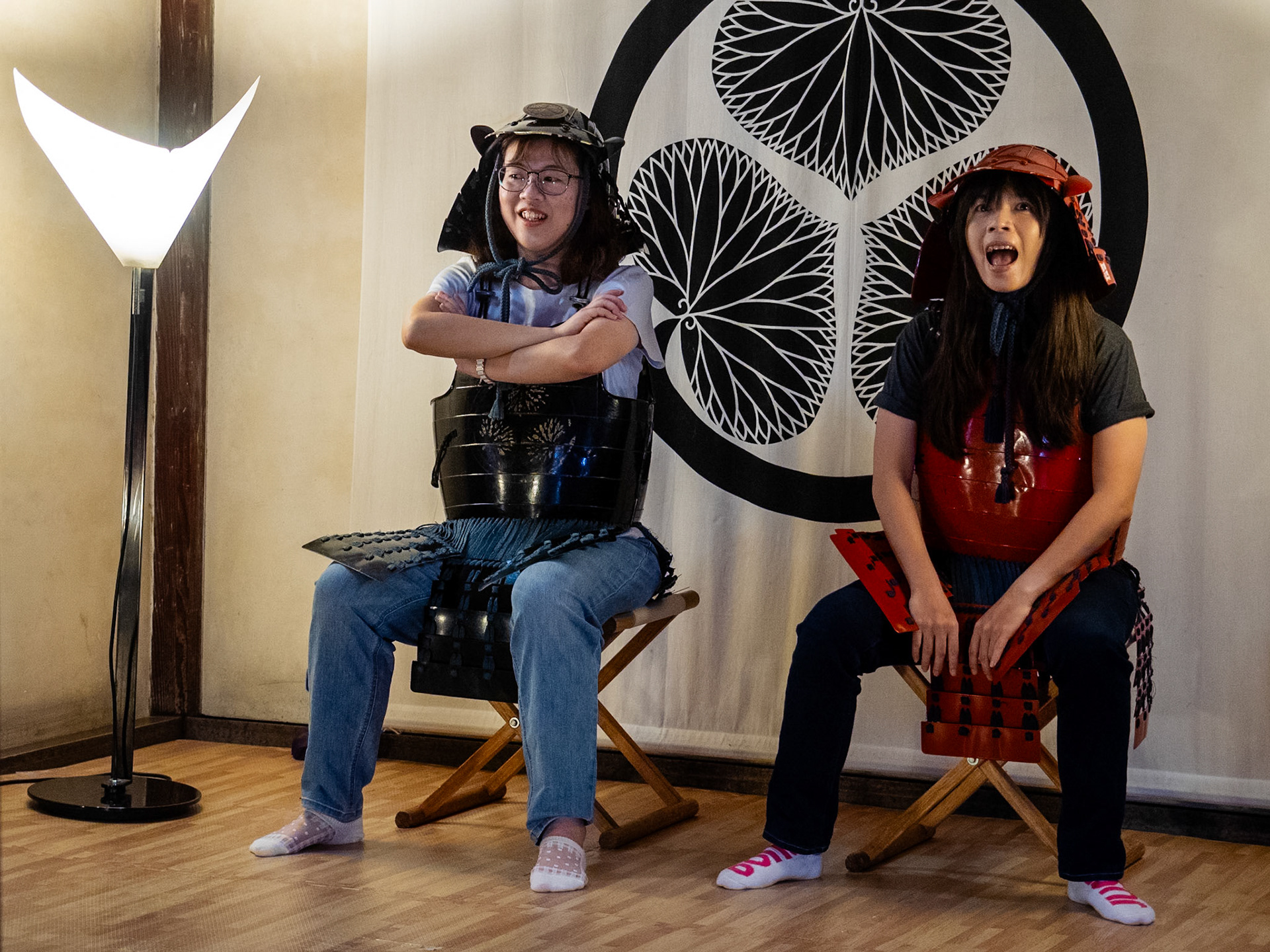
Matsuyama Castle Interior

Imabari-jō Castle

Matsuyama Castle
Architecture and Art
Shikoku for most of it's history was quite isolated from the rest of Japan, particularly outside the northern coastal strip running from Takamatsu to Matsuyama. This rustic nature is reflected in the relative quality of the traditional arts & crafts, particularly compared to Central & Southern Honshu, or even Kyushu. Rural crafts like indigo dying or mulberry paper making were the specialities, and this is largely what's on show in the numerous local & provincial museums.
Where Shikoku does shine however is in more contemporary art & architecture.
For example Yusuhara.
This small town, tucked in the scenic mountains of western Shikoku is home to a remarkable series of wooden buildings by Kengo Kuma. Built to complement the town's historic theatre, which supposedly inspired him, and ranging from the Community Library to a hotel to the Town Office, these remarkable buildings make a magical stop in what is a delightful & unexpected place.
Traditional architecture in Shikoku is well represented at Shikoku Mura. This interesting collection of relocated buildings dots a hillside outside Takamatsu. Boasting everything from 18th century farm houses to early 1900's lighthouse cottages, it makes for an very interesting if slightly strenuous walk. There's even an Ando designed Art Gallery on site if you're missing your fix of concrete brutalism. Even so, rather than the architecture, the udon noodles served in the attached restaurant are possibly the highlight, and well worth catching the local train for.
Shikoku's public art galleries also punch above their weight, and are well connected to the top notch travelling exhibitions that regional Japanese galleries do so well. It depends on their schedules what is on, though Matsuyama City Gallery has a very good permanent contemporary art section as well.
Outside Takamatsu to the west, is the Marugame Genichiro Inokuma Museum of Contemporary Art, and north of Matsuyama and across the islands linked by the Inland Sea bridges are quite a few bespoke & unusual contemporary galleries. The biggest problem with these is they tend to have idiosyncratic exhibition change overs, and opening days, so you might strike it lucky or miss out in terms of visiting.
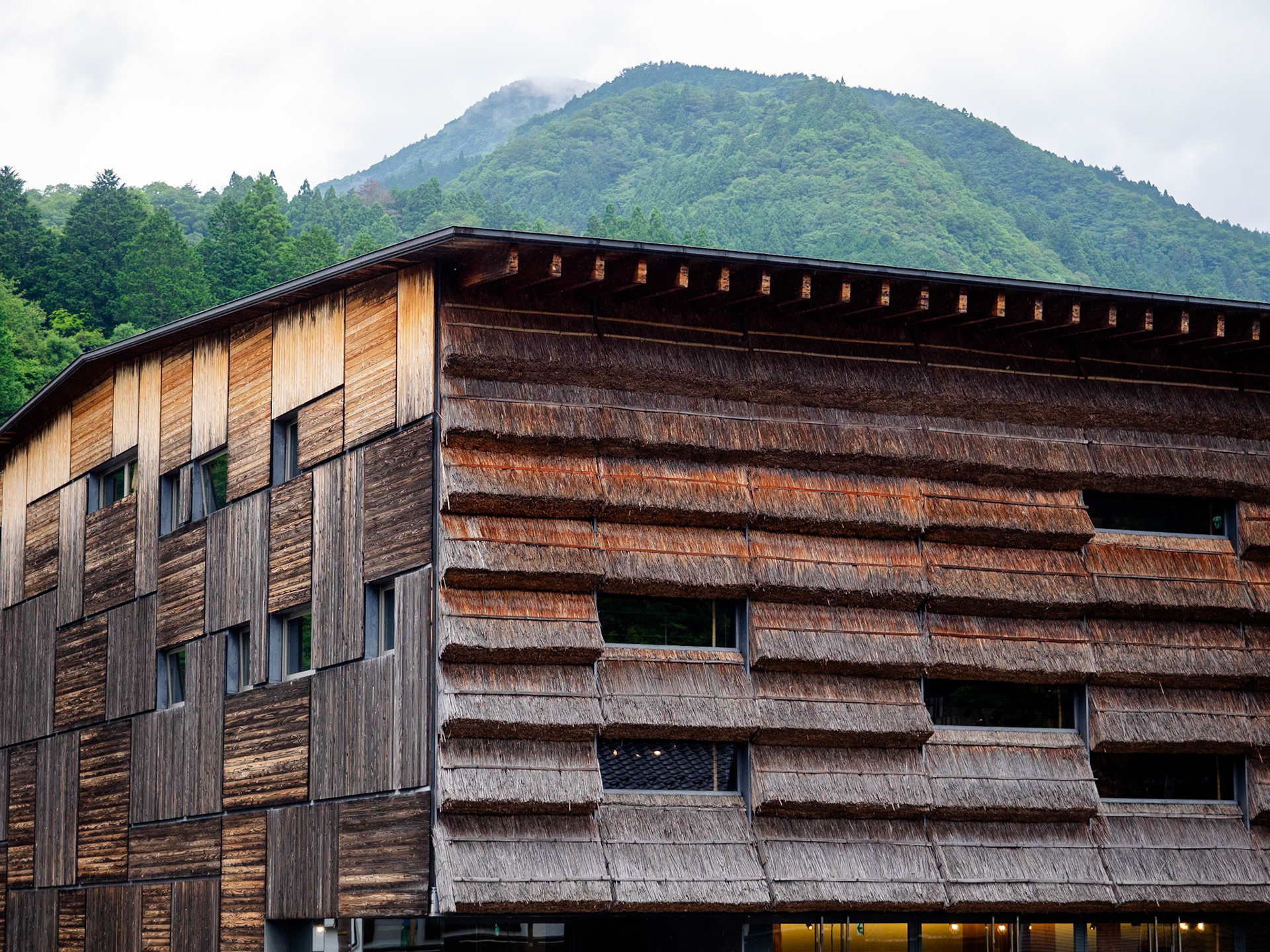
Kumo no Ueno Hotel, Yusuhara
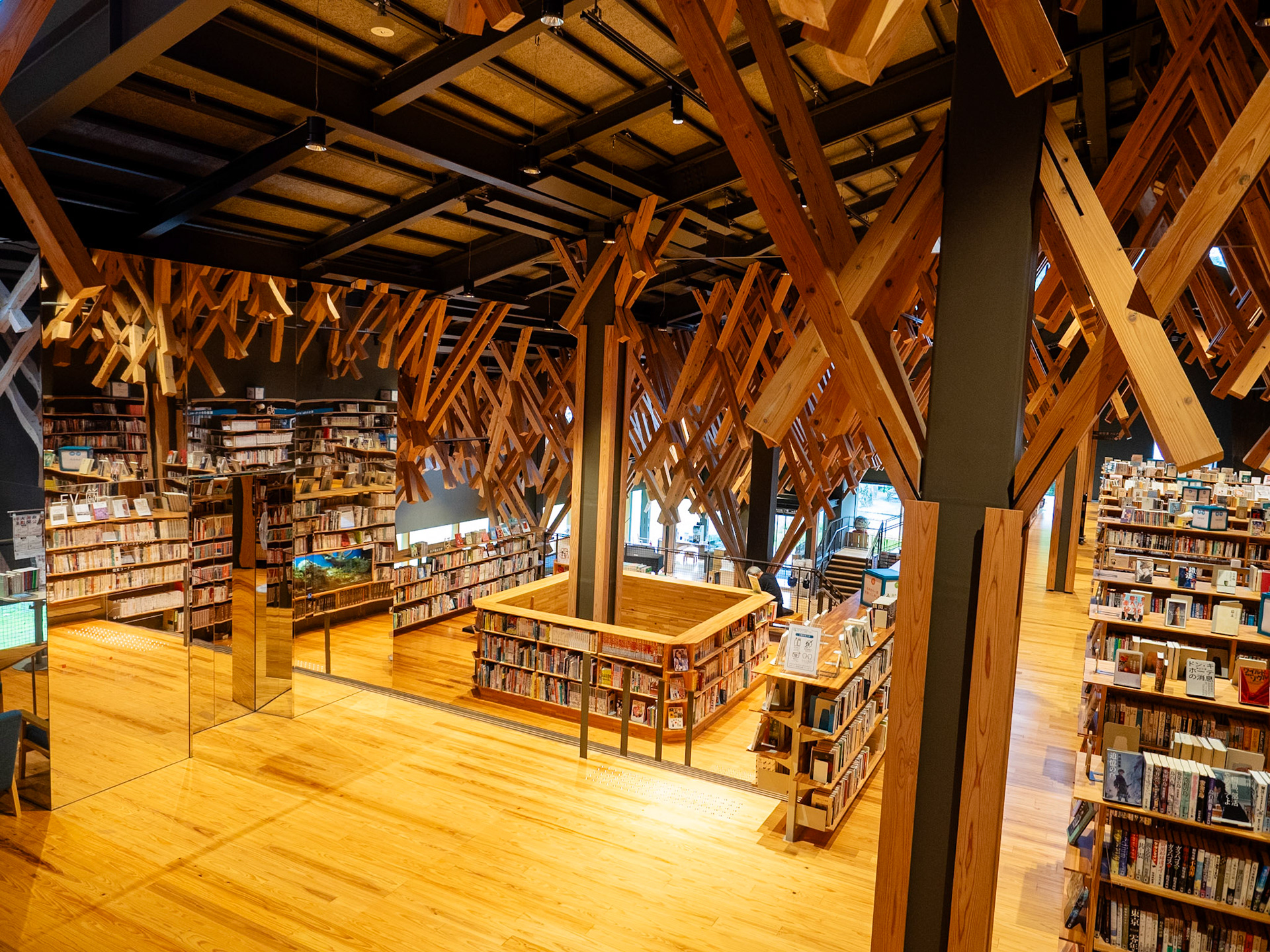
Yusuhara Community Library
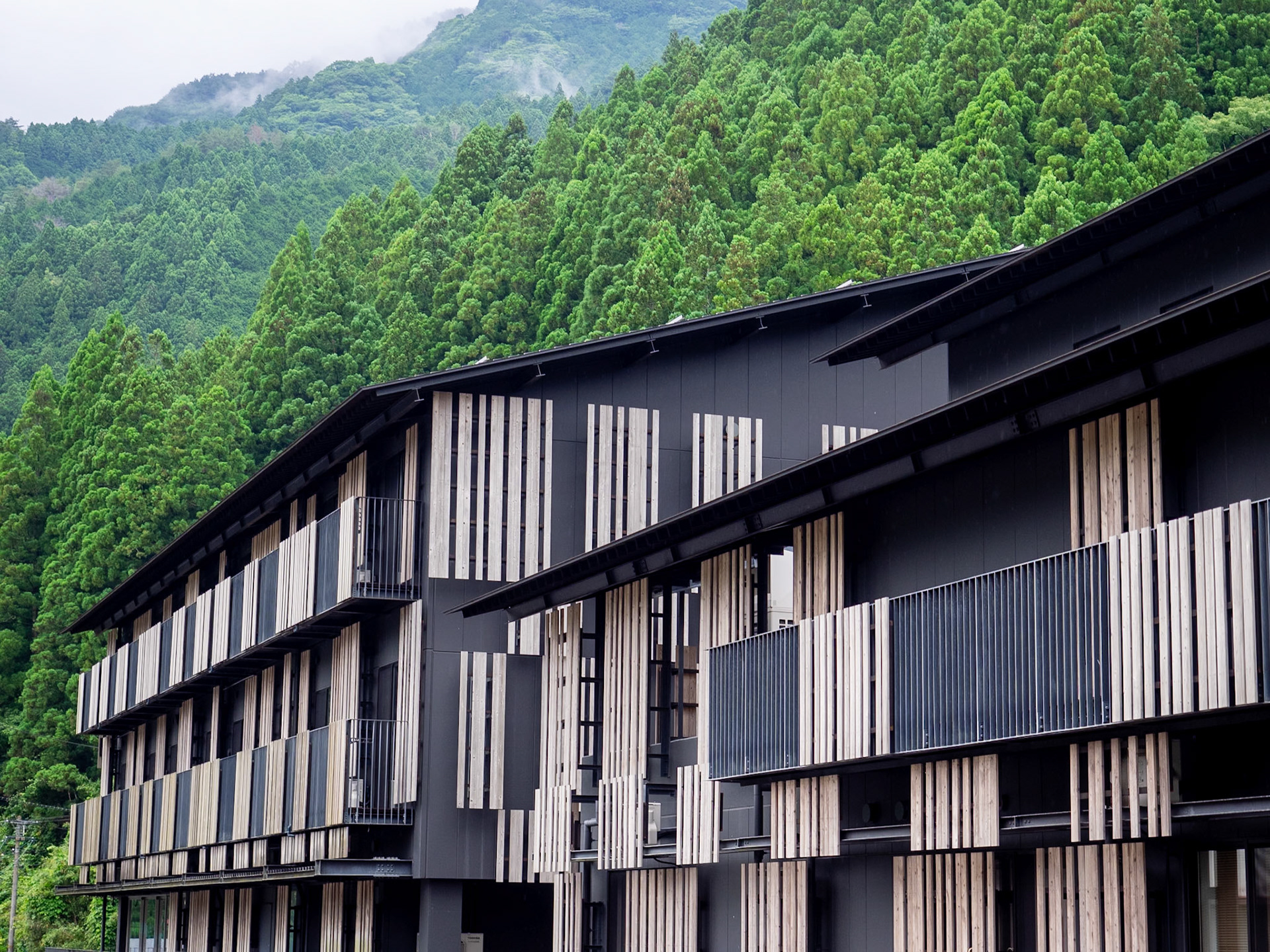
Yusuhara Community Library
Scenery & Day Walks
Shikoku is marketed both domestically and internationally for it's many chances to interact with nature. And quite rightly.Within a couple of hours you can go from misty mountain trekking or zip lining, to rafting rapids, paddle boarding in placid rivers or surfing the south coast. The various regional tourist websites are a good place to start investigating this, especially for the more adventurous or hardcore options.
In this section however I want to mention a few places that offer very rewarding shorter walks or chances to interact with some spectacular scenery.
The Iya Valley
The Iya Valley fully deserves it's reputation with foreign travellers - it's extremely atmospheric scenery is both intimate and awe inspiring. Worth noting that the popularity of the Iya Valley among Westerners is a bit of a mystery to other Japanese - to them this place is still undiscovered and they're surprised any foreign tourists have even heard of it. Note a car is by far the best way to get around, but you do need to allow a lot of extra time for journeys. Partly because of the roads, which are tricky, but not actually dangerous, though road works deep in the Valley are an added complication. But also because these twisting, winding valleys reward frequent stops & contemplation.
Nakatsu Gorge & Yasui Gorge
Both these places are nestled in the mountains inland from Kochi city, and offer any combination of long day walks or shorter one to two hour excursions.
Yasui Gorge is probably the better known, and more publicised for it's deep blue water pools. The actual scenic locations here spread out along a river for several kilometres beside a road, with multiple car parks on it's length. This relative ease of access, and minimising walking time might account for some of it's popularity. Adventurous souls can continue upstream, or cross the river for various waterfalls & side paths. I have to say that Yasui Gorge isn't really a gorge, and although pretty, not the most atmospheric walk we've done in Japan by any stretch.
On the other hand Nakatsu Gorge is. The easy walk here is a couple of hours up & back along a genuine gorge, and with quite varied and beautiful surrounds, culminating for most at a very nice waterfall. Hardcore walkers can continue on, either further upstream, or up onto the surrounding ridge lines. Thoroughly recommended. Note the final access road to Nakatsu Gorge is pretty narrow, and a little tricky, before parking in the grounds of an abandoned school.
Cape Ashizuri
Cape Ashizuri is at the south western tip of Shikoku. A spectacular mix of cliffs, subtropical vegetation and wild camelias there are multiple viewpoints and walks available. This is one spot I wish we'd had more time to fully explore. Unfortunately it's a long hours drive, along excellent roads, past sea views, tucked away fishing ports, & winding hills, from Shimanto, the nearest town of any size, and the pandemic really seems to have hit the local accommodation options hard.
The Shimanto River
The Shimanto River enjoys it's status as Japan's longest undammed river, winding in a huge U shape through south western Shikoku. So much so that there are two towns called Shimanto along it's length, the largest near the river's mouth.
Taking drive from here along the Shimanto Valley, and eventually across and up into the mountains to Yusuhara is an absolutely great road trip. The river itself is famous for it's submersible bridges, which you may, or may not ,choose to use. (Or have no choice if there's a landslide road diversion). The road itself has some very narrow, indeed vertiginous, sections so a bit of care is needed, but the changing vistas make this one of the best scenic road journeys I've come across in Japan.
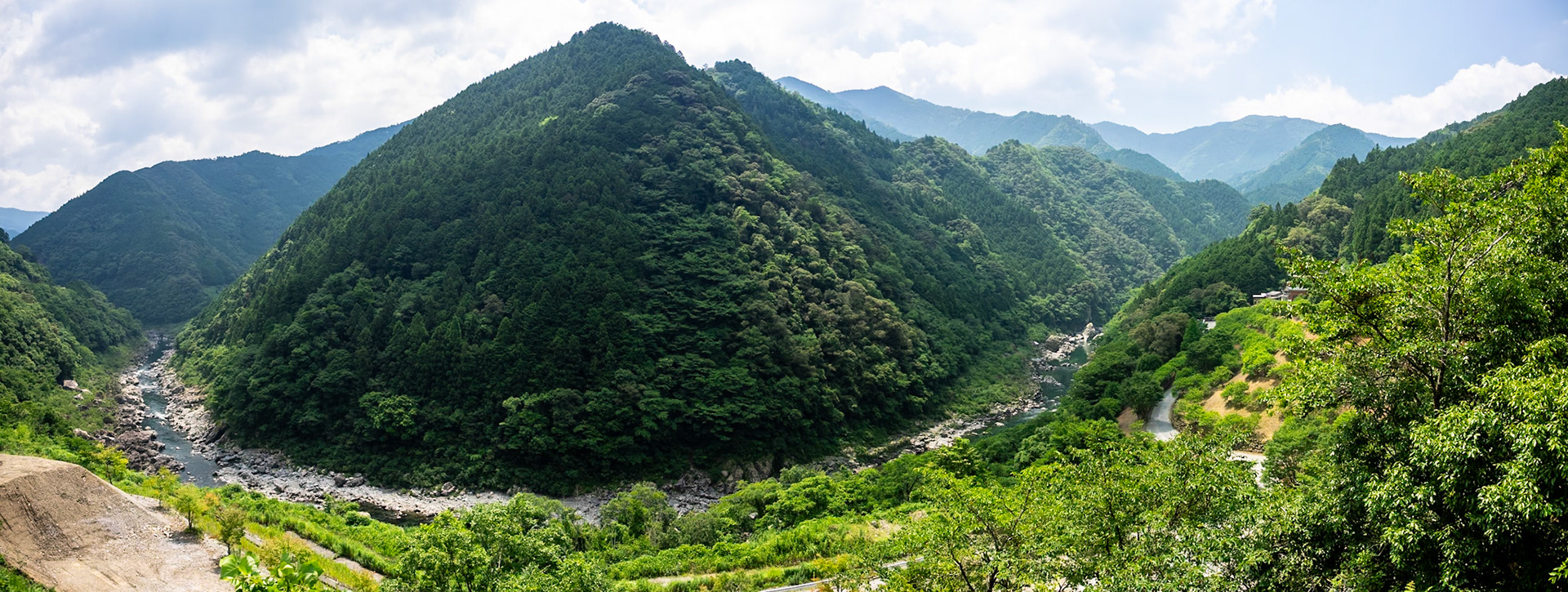
Roadside view between Kochi & Nakatsu Gorge
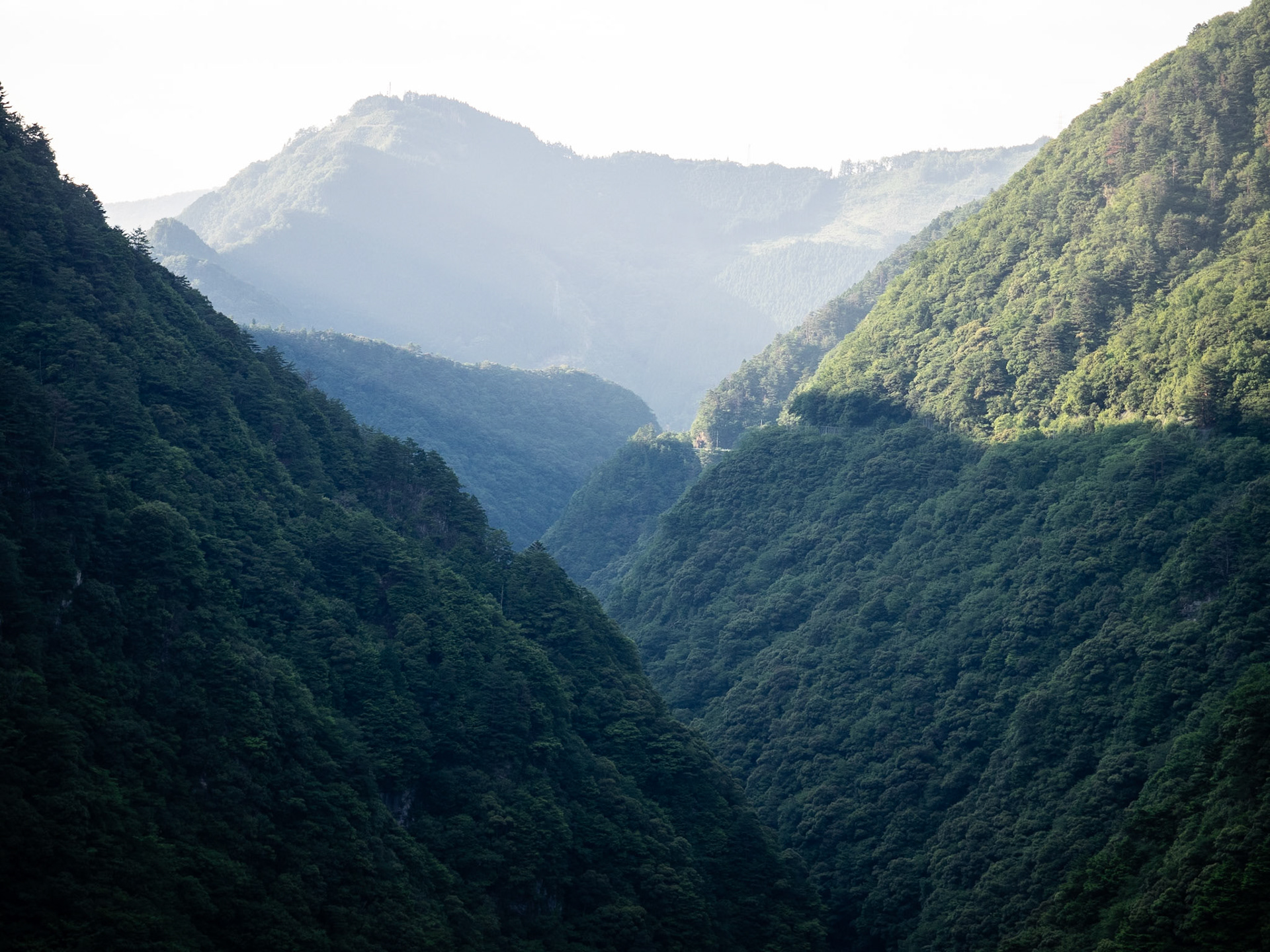
Iya Valley

Iya Valley
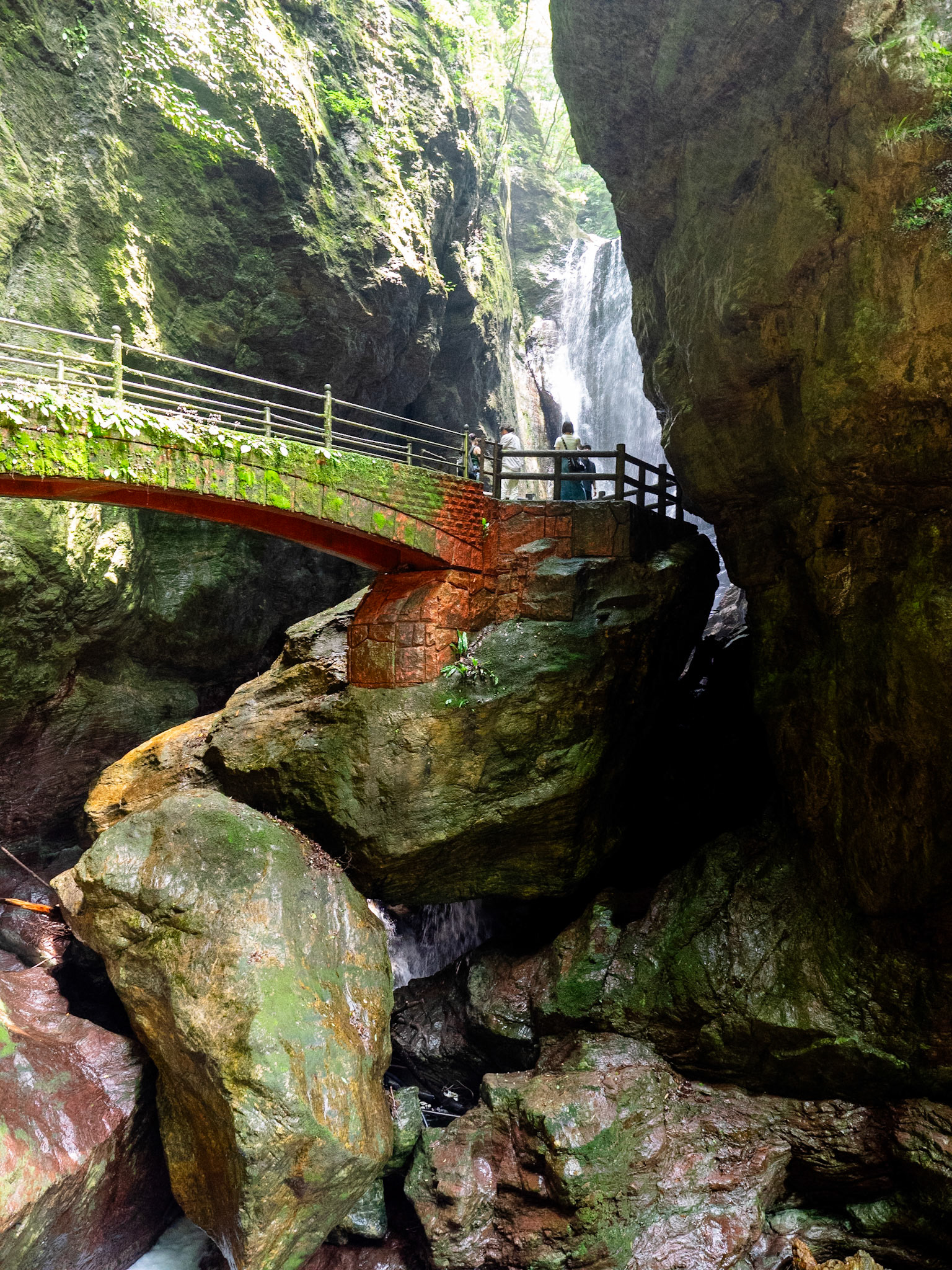
Nakatsu Gorge
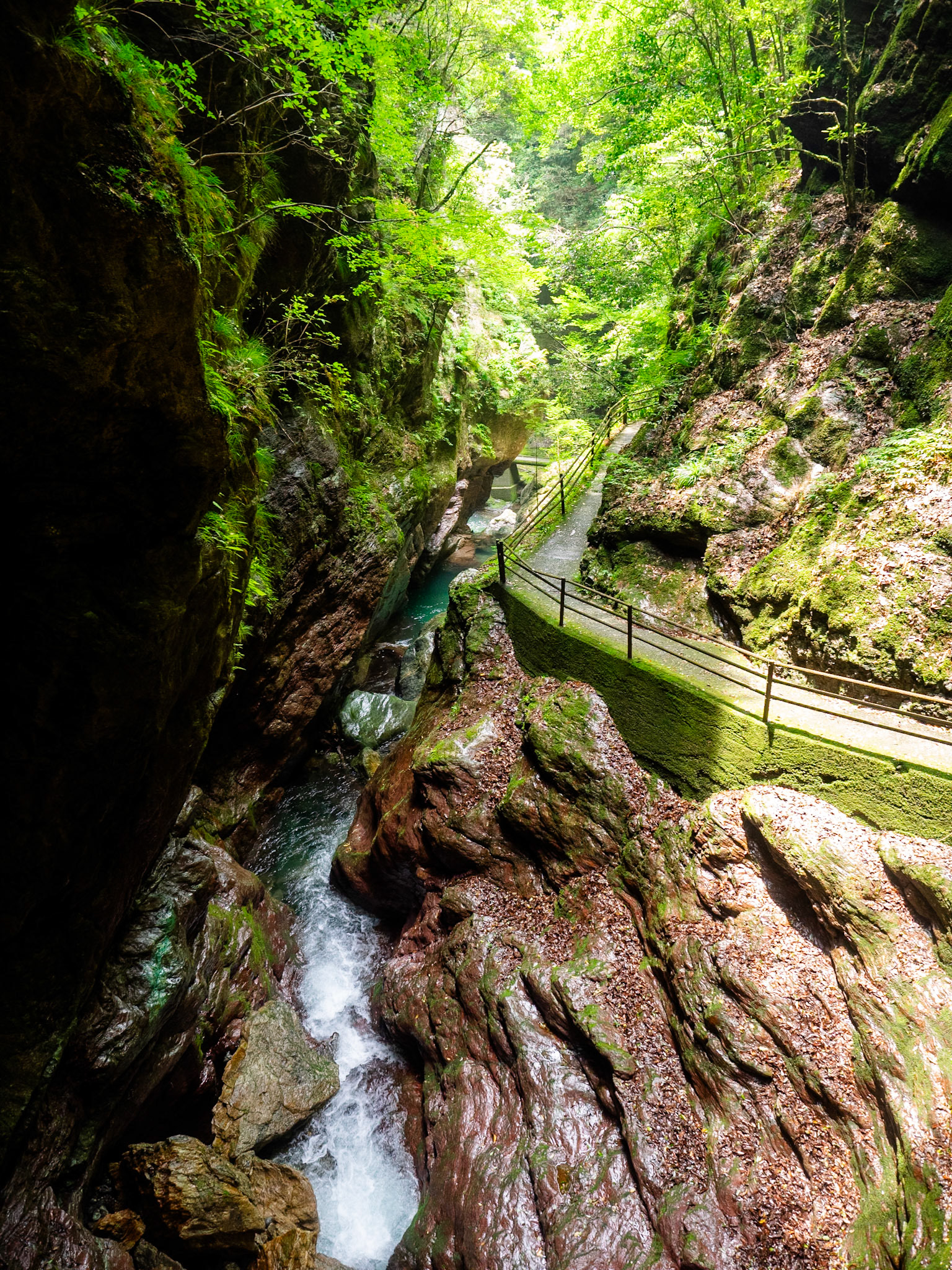
Nakatsu Gorge
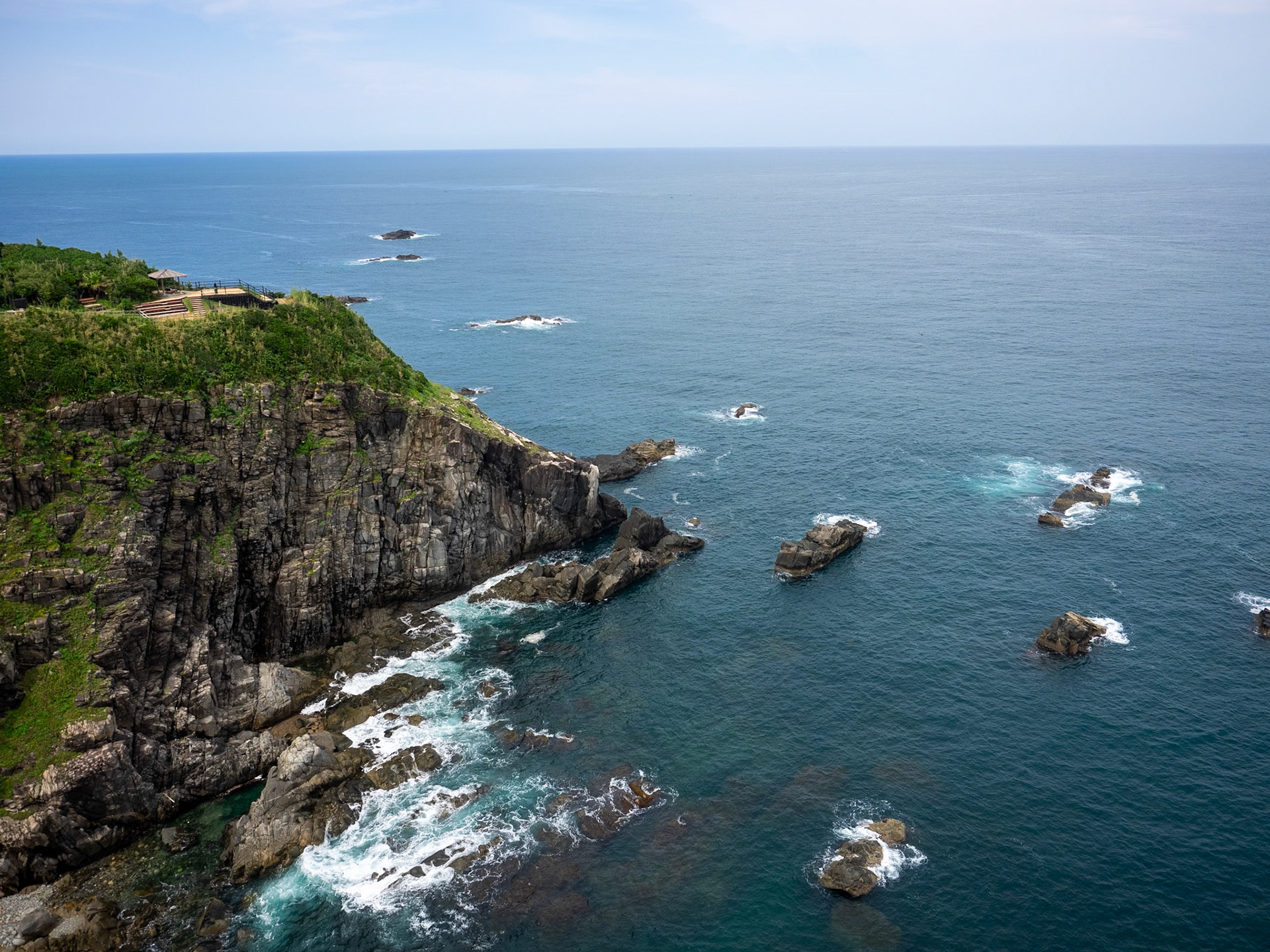
Cape Ashizuri
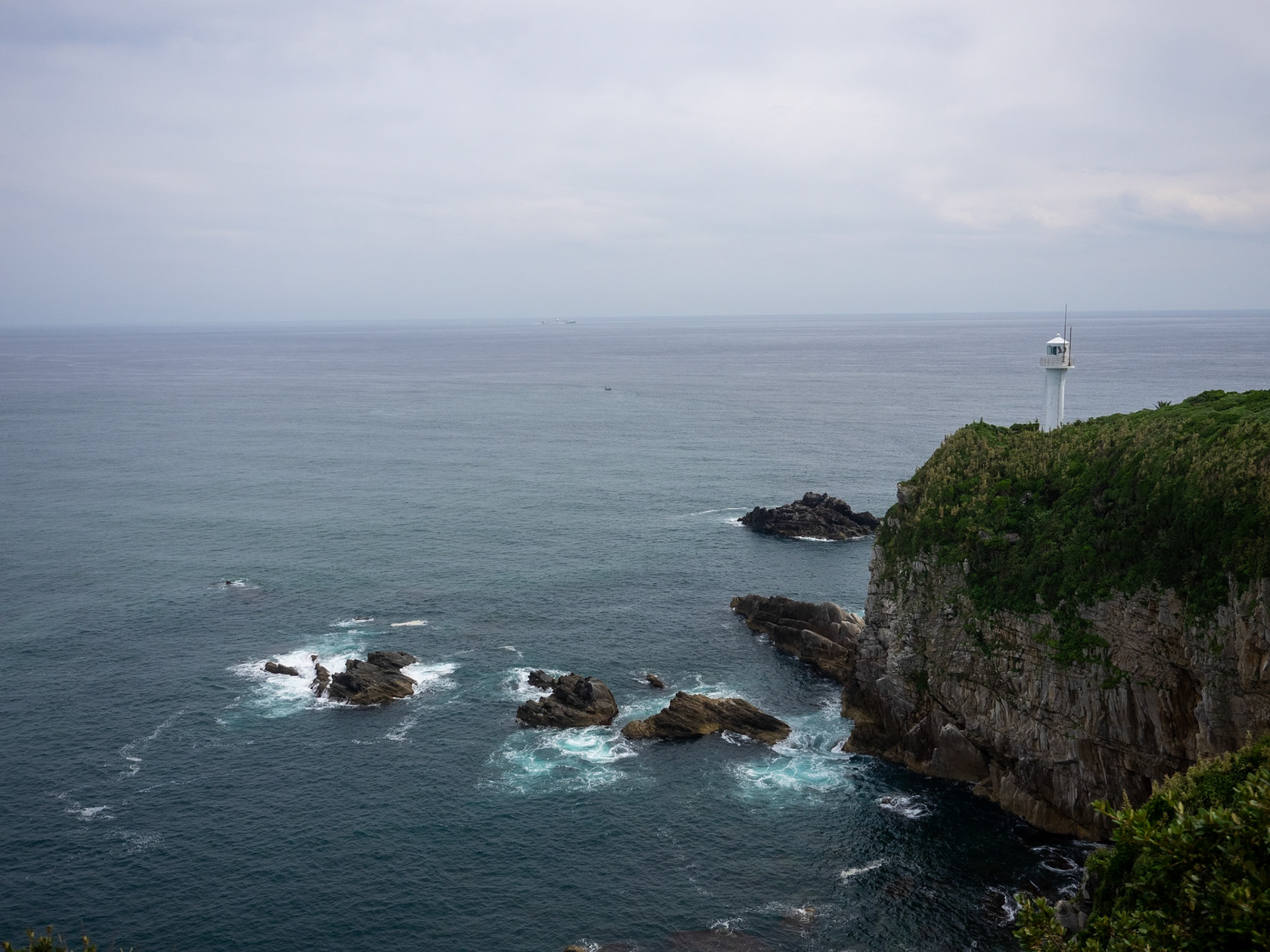
Cape Ashizuri
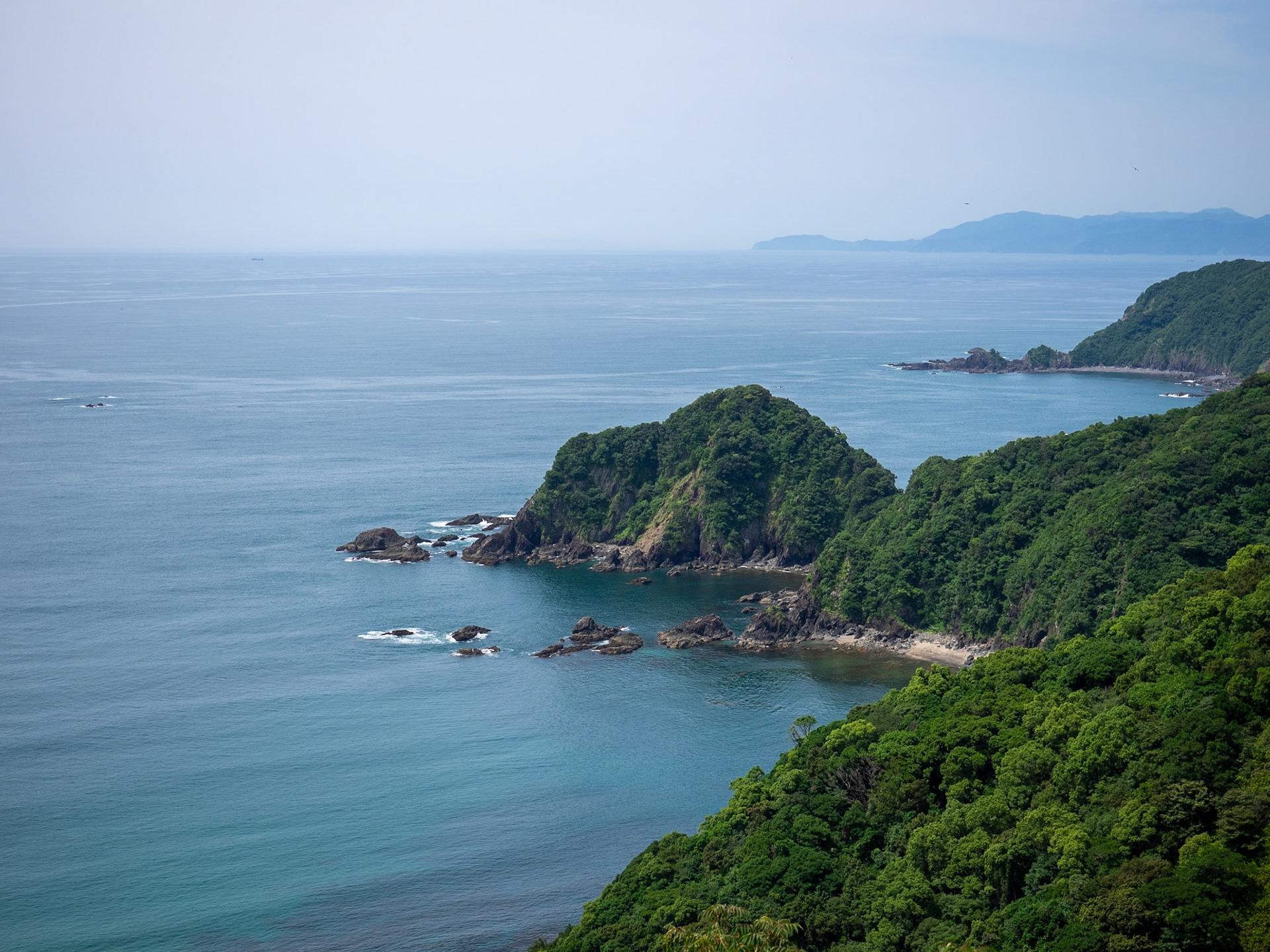
South Coast, Shikoku

Shimanto River Valley
